#I need to make more midori centered art��
Explore tagged Tumblr posts
Text


I am under a legal obligation via contract with happyelements to fully listen to mahiro no zanzu whenever it comes on
#enstars#lilac.art#ensemble stars#yuzuru fushimi#midoyuzu#midori takamine#lilac is not good at comic format#small little comic bc I always think abt them#early stages of their relationship#I need to make more midori centered art…#also really want to draw any other character#but these two always end up on my canvas#been rewatching saiki k recently#forgot how much I loved it#I hope you all are doing very well!!
253 notes
·
View notes
Text
Too many thoughts on SPN 15x17, “Unity”
Welp, I don’t usually do this, but this episode was so great and packed with so many good parallels and callbacks I couldn’t help it! Meredith Glynn is such a great writer. So, let’s begin. Lots of spoilers under the cut.
The first scene opens up to Amara living life to the fullest in an Icelandic hot spring (I’ve been to some in Iceland and would 10/10 recommend – don’t bother with the Blue Lagoon, though). My eyes were immediately drawn to the super recognizable cover of Murakami’s “Norwegian Wood”. Now, I haven’t read this book since, like, high school (now realizing that was a DECADE ago), but I do remember the general plot and themes of the story (I should really reread that again, it’s a good book). Basically, the story is recalled by our narrator and protagonist Watanabe at a later point in his life as he is reminded of a time of life when the Beatles’ song “Norwegian Wood” plays. I don’t want to spoil the whole book, but basically it is a coming of age story that is steeped in themes of regret, sex, love, and death (among others, it really is a literary treasure trove!). Skip the next paragraph if you don’t want “Norwegian Wood” spoilers.
In short: Watanabe’s best friend from high school commits suicide which haunts him and his friend’s girlfriend, Naoki, for the rest of their lives. Watanabe and Naoki become close and romantically involved, but she leaves for a sanitorium. Watanabe wants to be with Naoki despite her telling him that she doesn’t think she can love anymore (she described herself and her high school boyfriend as soulmates). Watanabe later meets Naoki’s opposite, Midori, a lively girl who Watanabe grows close to and is also interested in. Watanabe essentially doesn’t move forward as he is waiting on Naoki while having Midori waiting on him. At the end of the story, it is revealed that it has always been Midori and he realizes he wants to be with her.
I thought that this was an EXCELLENT pick for Amara to be reading. It really sums of a lot of surface and not-so-surface level themes in Supernatural. Wondering if there is a parallel between Dean and Watanabe about sort of idealizing a life (with someone) that isn’t meant to be while ignoring love in front of you? Would love to hear all of your thoughts.
Moving on (I’m skipping through parts of the episode to just focus on some key observations)! Amara tries to convince Chuck to fight on behalf of this world and wants to show him some of his creations. So, she brings him to Heaven to see his ‘first children’ (i.e., angels). She also refers to angels as having prefect angelic devotion which immediately made me laugh because our fave angel Cas is really devoted to Dean humanity and not Chuck. Ahh! This whole episode just kept pointing out how special Cas is.
And then, callback after callback began. Amara brings Chuck to the bunker so Chuck says, “Is this a trap?” which made me think of episode 9 (“The Trap” by Berens). This was almost immediately followed by another callback when Chuck says, “You can’t hold me here forever,” to which Amara replies, “I can hold you long enough.” Um, Lily Sunder Has Some Regrets (12x10, Yockey), anyone?
Ishim: “You can’t hold me here forever.” … Lily’s powers are wearing off as Ishim approaches her until Cas stabs Ishim in the back with his angel blade. Cas: “You held him for long enough.”
Like, COME ON! Almost verbatim.
Skipping forward to Dean and Jack’s adventure to visit my favorite hippies, Adam and Serafina (like seriously, they were fantastic characters!). Adam refers to himself as, “…first dude off of the assembly line,” which is similar language that has been used to referring to angels in the past (again, invoking Castiel?)
Then Dean assumes the woman is Eve but they both just shake their heads and chuckle, “I’m Serafina,” I’m definitely not the first one to point this out but… the First Man being in a near-lifelong romantic relationship with an angel named Seraph Serafina?! Uh, yeah, ‘nuff said.
Serafina also mentions that she saw Jack when she and Adam were, “…sipping mushroom tea on the Hanging Gardens of Babylon,” which made me wonder if there was some sort of connection with Glynn’s season 14 episode, “Byzantium” (14x08), which is the episode Cas makes his deal with the Empty. Babylon was a fortress of the Byzantine empire (not going to lie, my historical knowledge about the Byzantine empire is preeeeetty limited).
I also loved the whole speech by Serafina to Dean: “I mean, just think of everything that has had to happen to get Jack to this place, to this moment. Baby, it was meant to be,” Dean, of course, is upset by this because he is probably thinking that this was all basically predestined, and he has had no free will. However, he just needs to wait a little while longer until Chuck tells him to his face that he has never been able to control Cas since he laid his hand on Dean saving him from Hell.
Serafina also heals Adam’s wound and it is, of course, super reminiscent of Cas healing Dean (although, even Serafina doesn’t directly touch Adam when healing him – it’s, once again, unique to Castiel). Obligatory hand squeal: HANDS!!!! Wow, they are not even trying to be subtle about the whole hands thing. It is so IN YOUR FACE begging for the audience to notice it.
Adam then mentions how much power is in his rib: “But this puppy? Is packing enough punch to create LIFE. Or, in your case, destroy God.” Well, at this point I think we can all be pretty certain that in the end it will NOT be used to destroy God, so will it instead be used for creation? Excited to see how they defuse Jack’s supernova bomb next episode.
Rounding off Dean’s vignette is a heartbreaking scene with him and Jack in the Impala. Dean says, “I don’t know how to explain it. When I learned about Chuck, it was like – it’s like I wasn’t alive. Not really. You know, like, my whole life I’ve never been free. But like, really free. But now, me and Sam, we got a shot at living a life…But now we have a chance. And that’s because of you.” Again, this is before Dean learns that Cas’ actions were made of his own free will, and from the sounds of it, Dean’s connection to Amara as well. I also immediately wondered if Jack bringing Dean some sense of freedom was what Cas saw when Jack showed him “paradise”.
Moving on to Sam’s vignette: Sam remembers that Sergei mentioned the Key of Death was in the bunker (how did he remember this, wasn’t he unconscious at the time? A little disappointed Cas didn’t get to provide that little fact but I’m also glad that Sam actually served a purpose this episode and was a bit more front and center). They find the Key of Death and there is an inscription in Latin on the box:
Viator mortalis, cave, quoniam scias Clavem Mortis pensare graviter. Il tamen desideres ut introeas illum abyssum obscurissimum artis opus est tibi porta.
Okay, fair warning: I took Latin for 4 years but it has been awhile so my translation is super not perfect, but I figured I would take a stab at it because the subtitles were wrong at times and Google translate is not perfect. I translated it as something like this:
Mortal traveler, beware, because you know the Key of Death should be considered seriously. However, if you want to enter the darkest abyss, this work of art is the gate/door.
Honestly, there were a few words that I couldn’t find the right conjugations to and I know this isn’t 100% accurate, but it gives you the gist.
Sam then visits Death’s library and finds the Empty there, killing people (?) to get in touch with Death, whom they hasn’t been trusting as of late. We learn that Death’s plan is to assume the role of New God and restore the world back to order, bring back rules. The Empty is wary because they don’t know if they can trust the promise of being able to go back to sleep. Trust issues, the Empty says, because of “your busted-ass friend in the trench coat,” another subtle-not-so-subtle mention of Cas. But why, exactly, did Cas give the Empty ‘trust issues’? Was it because he woke up in the first place? Because he has ‘traipsed in and out’ of the Empty without dying?
We also learn that only Billie can read Chuck’s Death book, and, this may be a crack idea but… maybe Cas should be able to read the book because he was the one that killed Billie and made her Death in the first place? Seems like Cas might have a connection to Billie. It would be cool if Cas were the one to read Chuck’s book.
Finally, we learn a bit more about the Empty, and how they can’t go to Earth unless summoned. Hmm…
Flash forward to Amara and Chuck in the bunker. Amara tells Chuck, “It’s not too late, brother,” and, if you’re like me, you finished that sentence with “it’s never too late (to start all over again)”. So many great Destiel songs out there, but “Never Too Late” takes the cake for me.
Amara and Chuck decide to become one, become ultimate balance. Chuck extends his hand and Amara grasps it as she is absorbed into Chuck. I don’t even know if I really need to say this, but… HANDS! (Destiel is already canon to me but if the show is going to make it more explicitly canon for the audience, it’s going to be through hands as I know people have been shouting about for several seasons now).
To finish, let’s talk about that kick-ass scene with TFW 2.0 at the end of the episode. We find out that Chuck’s real ending is to have Dean regress and give in to rage and kill everything he loves, probably ultimately leading to his own death. Woof, what a tragic ending (tragedy ≠ good ending). So, we’ve got to subvert that which Dean does after a heartfelt plea from Sam (“You would trade me?”). I enjoyed how much Dean looked back at Cas during this exchange, especially after Sam tells Dean that Eileen will die again. The parallels, the connection.
Honestly, I’m not sure why Cas and Jack were in that scene other than to have some meaningful glances exchanged between Cas and Dean and because TFW2.0 is together in the next scene. But… whatever, more Cas so I liked it.
And finally, the scene that had me shaking with VINDICATION.
Cas to Chuck: “What, you consumed your sister?” Chuck: “We came to an understanding, so spare me your contempt Castiel, the self-hating angel of Thursday. You know what every other version of you did after ‘gripping him tight and raising him from perdition’? They did what they were told. But not you. Not the ‘one off the line with a crack in his chassis’” (Cas looks back at Dean after a moment)
Okay, so let’s break this exchange down. So much satisfaction with just a few sentences. Bravo, Ms. Glynn.
“We came to an understanding.” Didn’t Michael and Adam say the same thing after they decided to share equally in their bond and vessel? Callback #1.
“…self-hating angel of Thursday.” Ahh, it’s been so long since we got mention that Cas is the angel of Thursday. The last time was, what, when Crowley says it to Cas back in season 6? By the way, it was totally meant to be that Supernatural will finish off the series on a Thursday. Callback #2 (ish).
“You know what every other version of you did after ‘gripping him tight and raising him from perdition’?” This is the second time the show has repeated Cas’ first line to Dean near-verbatim in two seasons. You know, just in case the audience forgot Dean and Cas’ infamous first meeting (which I am like 99% sure we are going to get hella callbacks to next episode). Callback #3.
“They did what they were told. But not you. Not the ‘one off the line with a crack in his chassis.’” Again, Chuck is closely paraphrasing what Naomi said about Cas in season 8:
8x21 “The Great Escapist” – Naomi: “You're the famous spanner in the works. Honestly, I think you came off the line with a crack in your chassis. You have never done what you were told. Not completely. You don't even die right, do you?”
Callback #4. Seriously, Glynn packed four callbacks into such a short time period. Wizard.
My only *criticism* of this final scene is that Dean and Cas didn’t seem to react too much to Chuck’s news about Cas always having free will (although, I think Cas already knew this, but it is news and confirmation to Dean!). I highly suspect that will come next week, though. I’m SO excited (and also terrified) for next week. We are definitely going to be getting a lot of Cas next episode. Misha, in an interview, mentioned that we would get Cas’ ‘chapter’ in 18, and I’m wondering if this will be the true Cas-centric episode? I don’t know, maybe the Cas-centric episode was “Gimme Shelter” but I was expecting more of a “The Man Who Would Be King” kind of Cas-centric episode.
All in all, 10/10. I keep reading and seeing things that are galaxy braining me, so it has been super fun reading all the meta and reactions to this episode.
Three episodes left. Get your tissues ready for Cas’ death (oops, is this even a spoiler at this point?) next episode. And remember, “Nothing ever really ends,” and “The end has no end,”
#spn#spn 15#spn spoilers#spn 15 spoilers#spn 15x17#15x17#Unity#Meredith Glynn#Destiel#Deancas#hands#meta#maybe?#spn meta#meta or just random thoughts and reactions#awesome episode#profound bond#castiel is key#supernatural
29 notes
·
View notes
Text
Here's another #RichDekuAu thing
- Deku's pet Informatica can split into 2 (Let's call em Inform(Info) and Mathica(Math)) Info usually goes with Izuku and Math usually goes with Katsuki
-These two are the go to Eyes in the sky, Info likes to go around the Midori Inc like a Flying Surveilance drone while Math likes to perch on Katsuki's shoulder looking at people creepily. It makes them feel tingly in their motherboards (awz).
- The Midori Inc has another way to make money other than information brokers. Hero vs Villain (Hero vs Hero and Villain vs Villain works too) Matched arena fights. They do this on the basement floor thats as big as a small town and as high as a Airplane can go.
-In these matched fights Heros and Villains are required to wear safety bracelets, they will be strapped securely around either their Wrists or their necks anywhere you can find a pulse easily. These willl ensure that there will be no heavy casualties or deaths inside the arena. If anyone dies in the arenatheir families will be given a heafty condolense insurance money+sponsorship for any children under the household name.
-The safety bracelets will monitor their pulse and blood pressure from time to time and their health will be shown as Health bars, if their health reaches low or if the refree deems the contestant unfit to continue (ie excessive bleeding) they will automatically lose by default, another way to lose is to admit defeat but that rarely happens. people can bet for who they think will win and Midori Inc will get 20% of all earnings. And if you lose the bet Midori inc will provide a 5% Refund.
- Every Hero and Villain are obligated to sign a Waiver + an agreement not to bring personal grudges into the arena all fights must be fought fairly (in accordance to the rules) and with caution for breaking the rules will black list you from Midori Inc INDEFINITELY.
-Viewers can watch the show and show support by donating to their Heroes/Villains (Usually Villains who join are Retired/ seeking a good fight with no risks) Midori Inc will not take any of such earnings other than Show Revenue. Which they will take 90% of the 10% will be split To each opponent by half.
- Allmight has participated in a special episode for the arena where anyone and everyone who wants to fight with no huge risks, that episode has over 10M views in the first week. Allmight did not take any of the earnings instead donated them to Orphanages who needed them.
- there is also The Maze in the third upper basement floor where Detectives and Policemen like to participate in where they work together with and without heroes to solve hypothetical Cases with very realistic props. A lot of people like this show. Midori Inc splits all profits 50/50 for this show since the detectives and Policemen come not to gain fame or anything but just to have fun with no real consequences. Tsukauchi comes by sometimes (He's a crowd favorite ;D)
- The second upper Basement is a place where Heroes, Villains, Detectives and Policemen alike can take a rest and enjoy themselves while they wait for their turn on the Arena/Maze, they can get free deserts and food with some complimentary drinks to highten the moral.
- Katsuki likes to appear A LOT on the Arena he's not a certified hero YET, but its a great way to train. (The fans love him (u gotta admit he has the looks))
- Endewhor- I mean Endeavore has joined once or twice it was eh.
- Aizawa instead likes to part in the Maze. He thinks the puzzles are interesting.
-The Arena and Mazes also have Teen Sections where Hero/Villain to bes can spar in and be watched by hundred to test their metal and if some are lucky they can catch a glimpse of the green haired big boss.
-If any trainees look promising they will most probably sponsored by Midori Inc, all their support items and basic neccesities will be funded by Midori Inc, Hitoshi Shinsou has a sponsorship and the Midori Inc has been faithfully supplying his gear ever since (Katsuki's sponsorship is a no brainer)
- Izuku watches the matches Religiously he loves them (Katsuki was the one to think of the idea tho, at first he just wanted to spar and train more so he jokingly suggested an arena "WOW KAACHAN! That's an Incredible Idea" goes to talk logistics with his mom " Wait no Izu-chan.... ugh god fucking dammit"
- The building also has Private Training rooms where you can be assigned your best suited trainer or bring a trainer of your own. Endevore and his son have meticulously used these state of the art facilities and Shouto has his own Trainer (Who Trains him hard but within reason).
- Endevore and his Agency has tried to make contact with the Boss of the Corporation but alas the big boss is too anti social to talk with poop sty so he has to settle with the Madam. Who obviously told him to F off but continue to support the corporation with his Agency's training sessions. Which he still does.
- Shouto has "Met" (more like seen a glimpse of) Izuku but he was stopped (Blocked) midway to talk to him by Katsuki.
-It was a Cat Fight told by many.
- Izuku just wants to watch the world progress but he won't supply his tech to anyone outside the Corporation even AllMight had a hard time trying to convince Izuku to supply his Agency. (In the end Izuku did relent but only if AllMight's Agency is willing to sign the papers to merge with Midori Inc in which they reluctantly did)
- Midori Inc tech is Super si fi, You can find Lazers, Mechanical WORKING wings, Spy gadgets, multi purposed shape shifting Gloves, etc etc.
-and ALL of them have GPS's to make sure they don't go into the wrong hands, if the gps is somehow compromised the tech will Self Destruct there is no failsafe to this.
- Izuku and Katsuki like Sitting on the penthouse balcony just watching the stars
-the Midori Inc building is in fact not in the city but rather is a vast forest Island of which Midori Inc is in the process of Purchasing every inch of, they have currently succeeded in buying 80% of it with the building as its center piece. Theres a Railway connecting the building with the city as to make commute easier.
- Katsuki travels via Private Jet to school since its slightly far away, the first time he arrived everyone thought he was some kind of celeb and others recognized him from The Arena fights he's somehow always won. He avoided signing a lot of Autographs that day.
- The private jet has Wifi, Bookshelves for school books and a 70inch Plasma screen Smart TV which Katsuki treats like his own baby.
- Everyone from class 1-A wants to ride the jet during the field trip but Katsuki rejects saying "If you guys wanna ride my fucking Jet to My fucking house, Your gonna be riding on the roof with a loose string to keep you straped on"
-No body but him and the driver + a few robot attendants came with him back home.
-everyone else took the bus + Bullet Train there.
#bnha au#bnha#boku no hero academia#my hero academia#rich izuku au#rich deku au#au#katsuki#katsuki bakugou#midoriya izuku#izuku#deku#bakudeku#katsudeku#tododeku?#Rich!izuku
293 notes
·
View notes
Text
When Yokota arrived back to the laboratory, Midori was again occupied by the object of his affection, bent at the waist as he loomed over the short wall of the nurse station. A video, no doubt the latest net sensation, played on Eiko-kun’s holo as they both giggled quietly. Yokota smiled, as fifty years ago one might have found him in the same position, laughing and flirting in the student union with the art student who would become his wife. Yokota had many apprentices throughout the years, and all of them were talented in different ways. Some were destined for greatness as epidemiologists, or primary care, or even, as with Takahashi-san, hospital administration. In Midori he had found something else. The young man’s energy and impertinence were emblematic of his age, and he still needed work on his bedside manner. An earlier patient nearly died of shock when the young physician callously described test results confirming a rare form of cancer, more taken with his prognostic prowess than considering its effects on the afflicted.
But whatever his latest protege might have lacked in self-control or compassion, he made up for with his brilliance in diagnostics. The doctor was a tireless researcher, willing to chase every and any strange symptom or bizarre condition, and an expert at multiple cutting-edge metrology and analysis techniques. Yokota was increasingly convinced that this was his last kohai, and Midori would make for a more than capable replacement managing the research laboratory.
The elder man’s hands were becoming arthritic with age, and his knees creaked loudly in the mornings, a testament to one too many years of kendo practice. He’d squirreled away enough savings to last a few years, and while he would never accept it, his daughter would no doubt offer him a place with her family. But he would never allow himself to become a burden like that. The Japanese government, much like it's global counterparts, had largely exhausted its ability to support its elderly population through any type of entitlement programs. Both domestic and UN politicians continued to pay lip service to the important role the aged played in modern society; here in Japan there was even a federal holiday for it. But that was not the first opioid-addict oba-chan he'd laid to rest, and likely would not be the last. Shinto was arranged around the worship of the already deceased, not those dying in a piss-alley gutter. No, Yokota-san would take a long walk into Tokyo Bay before he let himself become a burden. He would fade away from the changing world, leaving only his daughter and his work to succeed him. Just like Tomoko.
He approached the nurse station slowly and quietly, allowing the young professionals one small fleeting moment of distraction before they returned to their responsibilities. Eiko-kun gasped in surprise at the holo, lifting a hand to her mouth as a distraught cat scurried under the a table, fleeing the buzz of a drone bird flitting around an apartment. Her other hand, Yokota noticed, was resting quietly atop Midori’s. He stopped behind his assistant and cleared his throat loudly to announce his presence.
“Doctor Yokota,” Midori said, turning quickly and becoming ramrod straight. Eiko-kun blushed a bright crimson in embarrassment and killed the feed to her holo. “We, uh…”
“Am I interrupting?” the older doctor asked with mock severity.
“No, no. Eiku-kun and I were just discussing…” Midori stammered.
“It’s fine, Midori-san. Relax,” Yokota said reassuringly. “We all need a break sometimes."
The younger man sighed, his shoulders visibly releasing tension. He turned to Yokota, bowing his head low and away from the nurse. “Did you bring the sample?” he whispered, his tone conspiratorial.
“Of course,” Yokota replied, opening his bag to display the vial.
They hurried into the lab, where Midori had already been preparing. “I ran additional tests against the patient’s blood samples,” he explained. “ELISA measurements did not yield any results for hemorrhagic proteins, and visual scan results returned no signs of unusual viral strains.”
Yokota opened the vial and withdrew a small amount of the viscous fluid into a syringe before injecting some into a spectrum analyzer. The machine whirred and hummed to life as it processed the sample. Midori busied himself depositing an additional specimen between two glass plates and sliding them under a high-powered optical profilometer. The viewscreen kicked on and the younger doctor began scanning across the surface of the fluid, looking for any anomalous variations in uniformity that may indicate any particulates suspended in the emulsion. Yokota stepped behind his protege and watched idly as the constant surface aspect flowed by on the screen.
A small colored blip flew by the edge of the monitor, almost imperceptible. Yokota blinked, not sure if what he’d seen was real, or simply an illusion of his aging eyes. Perturbed, he wiped his glasses with his akita kerchief. Then it happened again. “Wait, what was that?” he asked. “Go back.”
“I didn’t see anything,” Midori said, confused.
“No, there it is again,” Yokota pointed as another colored blotch, larger this time, quickly came in and out of frame. “What magnification are you at?”
“Uh… ten nanometers,” the younger man said.
“Back out. Five-hundred nanometers,” Yokota instructed.
“That’s awful big for a viral infection, don’t you think?” Midori cautioned.
“Humor me.”
“You’re the boss, Midori said with a shrug, resizing the scan envelope to a larger sweep size. The servo-controller squealed as it lifted the interface head further away from the sample, then whined as it auto-adjusted its position for optimal clarity. Taking up the small joystick, Midori again panned slowly across the surface, now less uniform in coloration with several distinct rectangular structures dotted across the landscape. “What the hell?”
Yokota leaned in closer, his nose near to the screen. He reached over gently and took the joystick from Midori’s hand, centering the view on one of the structures and zooming in slightly. It was several hundred nanometers in length, with a pointed structure on one end of a tubular structure, and a flattened wider section at the other. “That… doesn’t look like any virus I’ve ever seen,” the older man commented.
“Is it some kind of bacteriophage? The overall structure looks vaguely like that, but I don’t see any of the landing fibers, and I have no idea what this... is,” Midori said, gesturing toward the non-pointed end. “That’s typically where the attachment fibers would go.”
“Agreed,” Yokota said, equally perplexed. “There’s a bunch of these, whatever they are, scattered about the suspension. Look, there’s more,” he commented, steering the profilometer across the surface as several more of the structures came into view.
Behind them, the spectrum analyzer blurted that it had finished its assessment, and the readout came to life displaying several chemical formulas. Yokota walked over to the instrument and hit the button to generate a print-out. A sheet of paper listing the chemical contents slid out from a slot in the front, and he laid it down on the bench to review, Midori behind and peering over his shoulder. “Well, we’ve got sufentanil in a sucralose suspension, just as we suspected. Explains the color and viscosity.” He read on: “caffeine, corn starch, trace organics…”
“Does that say tungsten?” Midori interrupted, pointing to the bottom of the chart.
“That doesn’t make any sense. And I don’t recognize this here below it either,” Yokota said, indicating a complex chemical formula.
“I do,” Midori said, a quizzical expression on his face. “It’s an esterase.”
“Not one of the pancreatic ones,” the older doctor countered.
“No. It breaks down certain types of plastics and polymers. Polyimide, in particular, if I remember correctly from my Biomechanics classes.”
“Why would anyone cut that into a street drug?” Yokota wondered.
#this is super-fillery#we'll return to the quote-unquote good parts later I promise#(if there are any in this monstrosity)#The World Ocean
1 note
·
View note
Text
CHAPTER 1 - 018
After talking to everyone with Hitomi, we decided to follow Midori to the rec room. She said there were some people discussing the… recent events, so we figured we’d go check it out and see what the general consensus on how we should deal with this is.
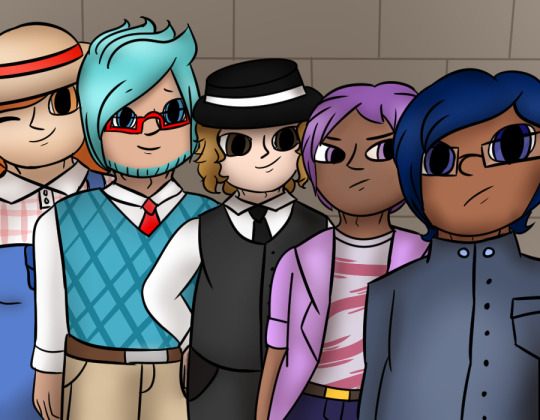
There were about 5 other people in the rec room when we went in -- Naomasa, Naoto, Mitsunari, Taiyou and Keiji. That meant that half of us were discussing the motive in the rec room. Midori closed the door behind us, and we walked over to the others. Naomasa was the first to speak.

“Lovely of you to join us, ladies.”
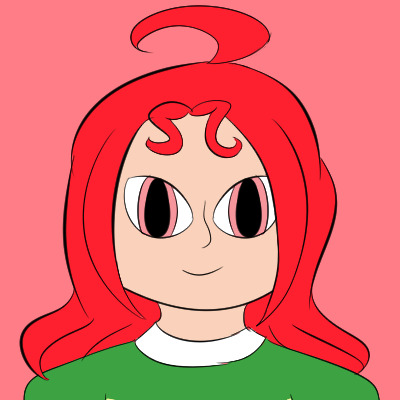
“Hey there! Matsuba mentioned this to us, so we figured we’d drop by.”

“Yeah, we were just talking about the… y’know.”
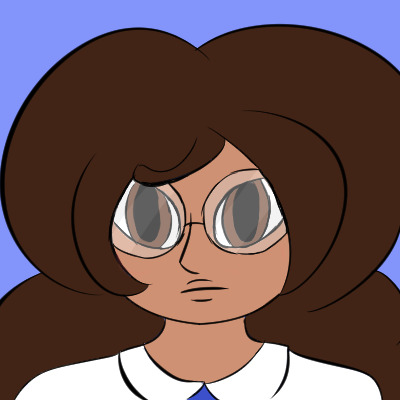
“Yes. That.”
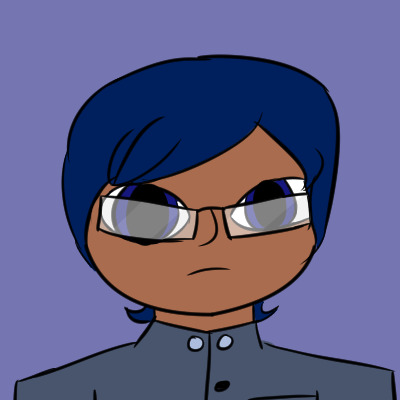
“We set this up so we could touch base with each other, and make sure there wasn’t anything concerning about these forums.”
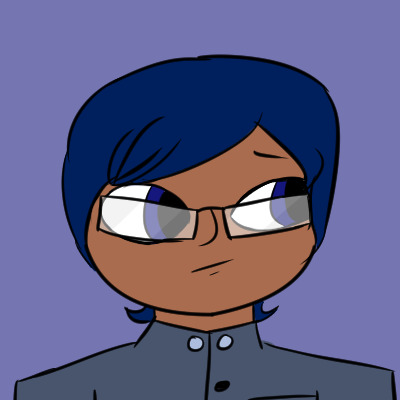
“I am a bit concerned about the others who didn’t show up though…”
The others who didn’t show up… that’d be Yuu, Hitoshi, Haruka, Naomi, Asahi, Yuki, Kasumi and Kotori. We talked to 2 of them, and we tried to talk to Kotori, but she was talking to someone else. I wondered what was up with the other 5?
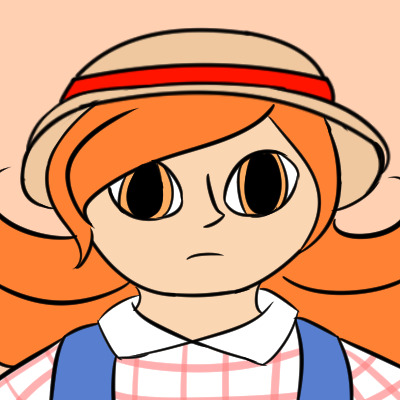
“Well, what’s important now is the people who did show up.”
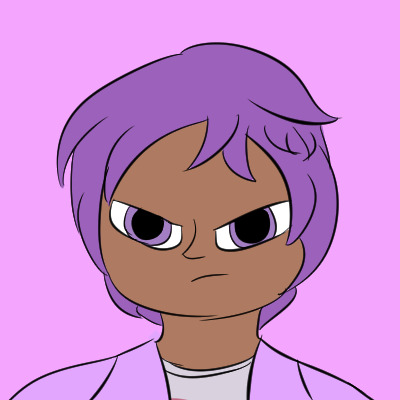
“Guess so. We’re just talkin’ ‘bout these bullshit forums. Where did that fucker even get these from? Did he really take’em from the school?”

“He said that he did, but given his nature, I don’t really think we can trust what he says.”

“So, what do we do? Just… Hmmm… Anyone got any ideas?”
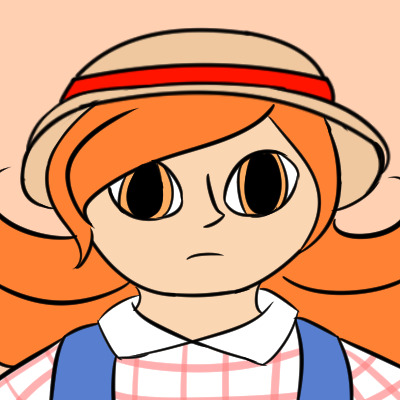
“Well, like Oxford Blue over there said, we’ve just been tellin’ each other what’s on our forums to make sure nobody’s like, a serial killer, or somethin’.” That was an… interesting way to put it.
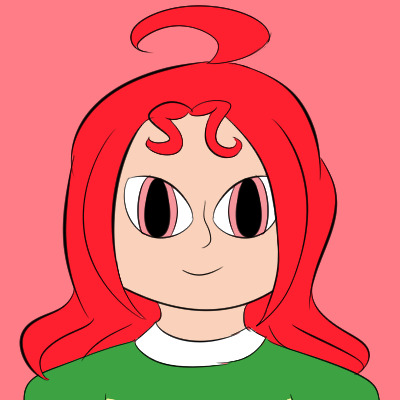
“Oh, alright then. I didn’t really see anything noteworthy on mine, unless you count some broken bones from rough soccer matches as something noteworthy.”

“I-I can confirm that! I, um, I got your forum, Kurosawa.”
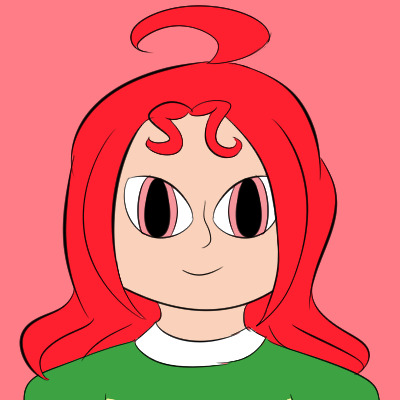
“Ah, that’s right! We all get two forums, I forgot.” How did I forget that? Get it together, Ichigo.

“So, do we just… go around the circle then…?”
Hitomi was next.
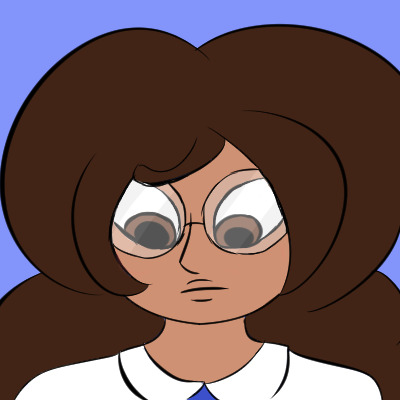
“Well, um… I was born with transverse deficiency... basically, I’m missing my left leg.”

“And as a result of that, I’ve been wearing a prosthetic for most of my life.” She lifted her skirt a bit to show the others her leg.

“...”
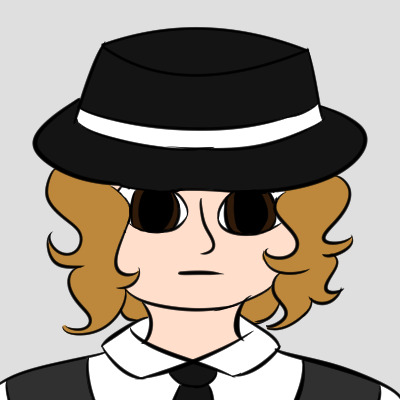
“...”

“Damn…”

”...Can’t imagine how tough that is… only havin’ one leg and havin’ to walk around with another that ain’t really yours…”

“Well, I guess it is kinda yours ‘cuz you own it, but it ain’t really yours cuz it’s… a fake leg… y’know what I mean.”
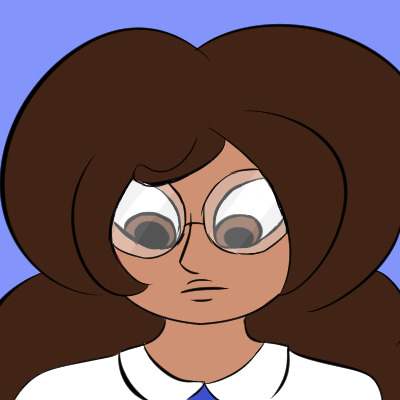
“Yeah… I get it.”
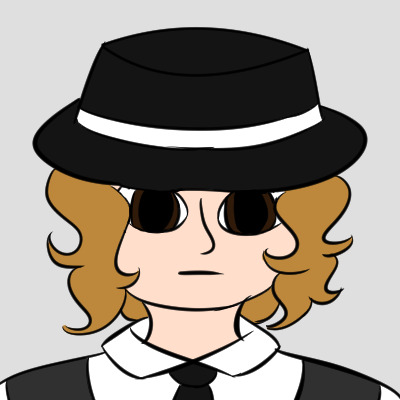
“...Thank you for sharing. Yamazaki? Taiyou said she received your forum as well, but is there something you’d like to share with us?”
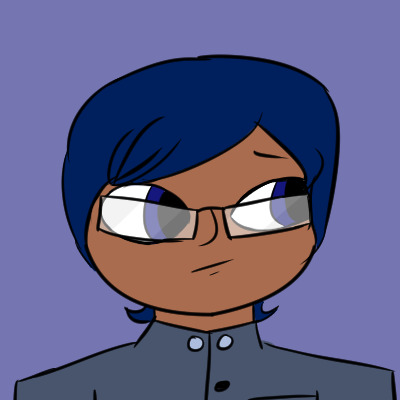
“Well, there is the reason I was scouted into Hope’s Peak in the first place…”
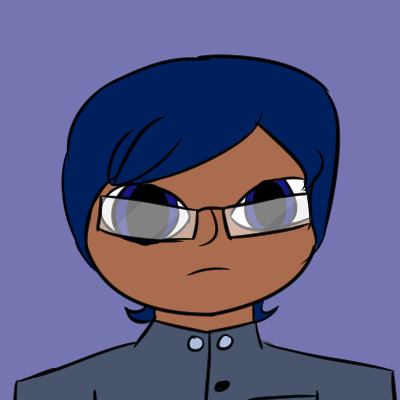
“In school, my average grade for math assignments and tests currently sits at 100, and it’s sat there ever since they started keeping track of my averages. My averages in subjects that involve a lot of math like science are also in the high ninetys.”

“The school board was baffled by how this was possible, and some of my teachers thought I was cheating. So when I was about thirteen, I was sent on a plane to the University of Tokyo, where I was tasked with solving 10 of the university’s most difficult math problems, while being watched by some of the professors to make sure I wasn’t cheating, because they didn’t believe that I could do it either. Joke’s on them, because I managed to solve them all correctly and flawlessly in precisely six minutes and thirty-eight seconds.”
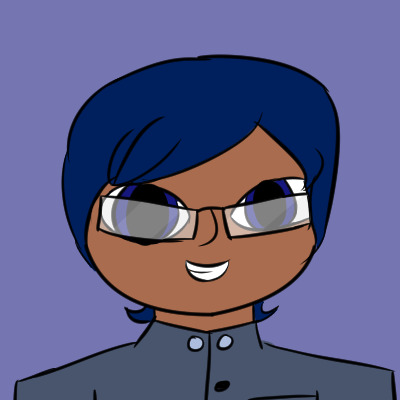
“They still didn’t believe it, so they took me to get an IQ test. I scored 166. That’s when I hit the news, and Hope’s Peak eventually found out about me, and put me into their Super Junior High School Level Divison, and after that... here I am now.”
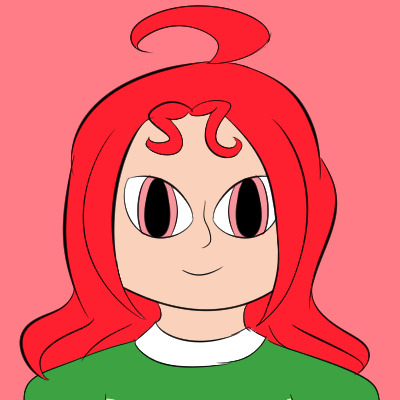
“Wow… that’s impressive!” Of course, he had already told me this information, but it was still crazy knowing a person as smart as he was!

“Whoa! You’re, like, one of the smartest people out there, and you’re only in high school!”
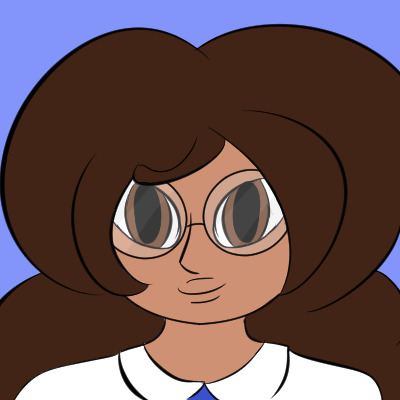
“He’s right! And with that IQ… you’re a literal genius!”

“Aw, c’mon, it’s not that special.”

“You’ve been a Hope’s Peak student for years, and you’re the guy who scored 166 on his IQ test when he was thirteen. I wouldn’t call that ‘not special’! Who knows what your IQ is now?”
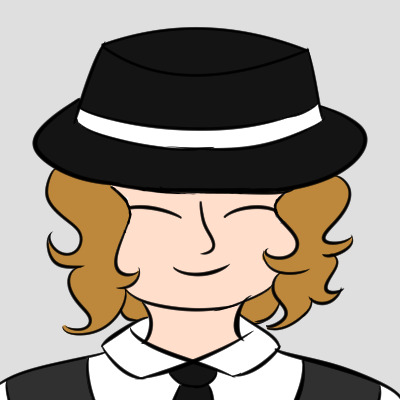
“She’s got a point! Mitsunari’s already told me that there’s nothing he wants to share, so it’s my turn!”

“Really, the only interesting thing on here is that I’ve been playing in the band since I was thirteen. Keiji?”

“...Nothing really on mine.”

“Keiji, I got your forum. I know.”

“...Okay, fine, I’ll spill.”

“...We yarnbombed an entire park in the dead of night. Me and my knitting group.”
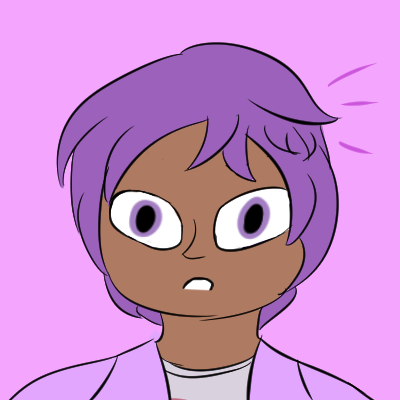
“You did what.”

“It was really fun! It was part of an event that we were participating in centered around art, so it was perfectly legal.”
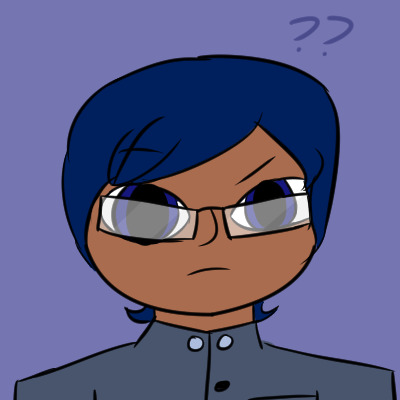
“Why would they put that on your forum?”

“It was part of the reason I was scouted. They wanted someone from that group, and since I was the only one still in high school, they chose me!”
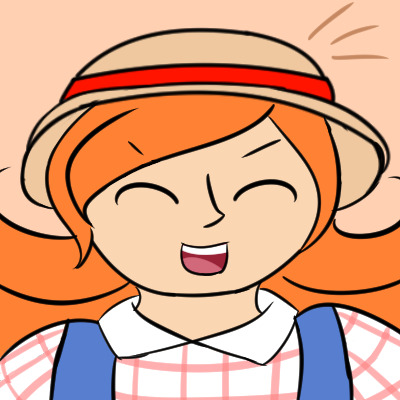
“Haha! You’re pretty wild, Thistle!”
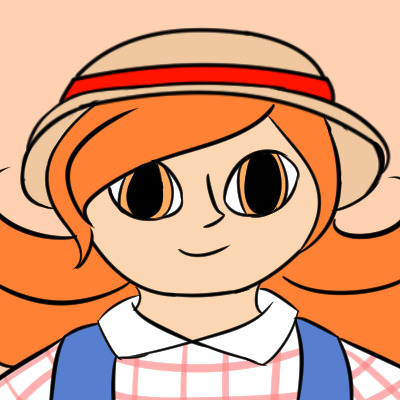
“There ain’t too much on mine, ‘cept for the fact that I apparently grew an inch since they filled this out.”
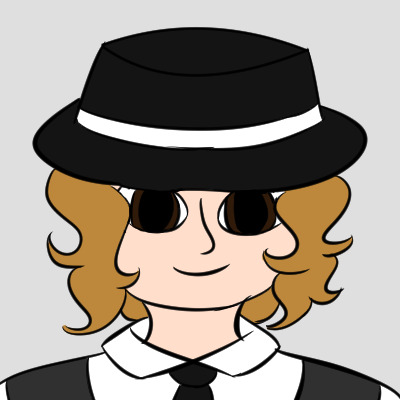
“Alright then. Matsuba, you’re our last one!”
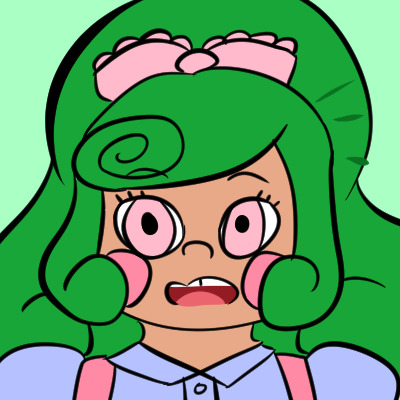
“O-Oh, me? Hehe, um, well…”

“Y-Y’know how Monomage said that some of us might be keeping secrets about our talents…?”

“Yeah, what about that?”
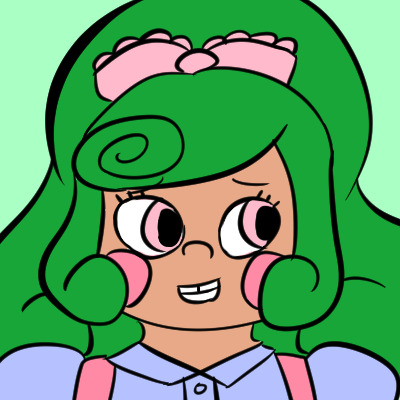
“Well…”


“...”
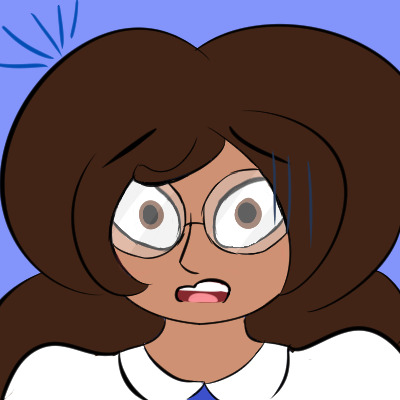
“!!!”

“???”
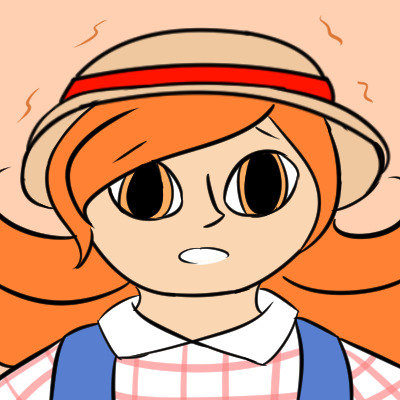
“Lil’ Candytuft… yer a-”
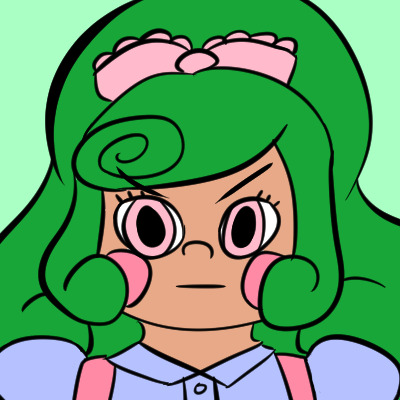
“Yes. I am.”
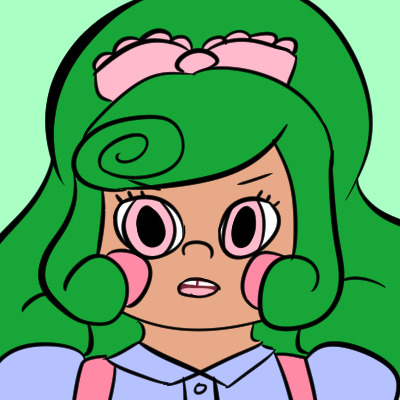
“Midori is… not real. She’s just one of the many identities I have assumed while going undercover. Everything you see on me is fake. The clothes, the hair, the makeup, the contacts, everything.”

“But… why’dja go undercover as a chocolatier?”
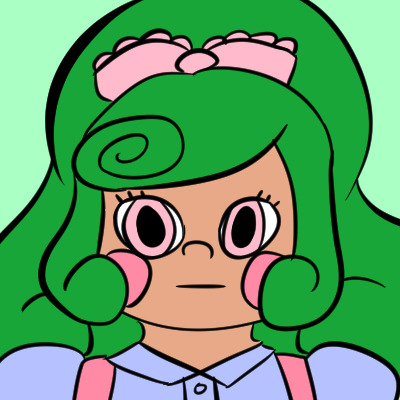
“You wouldn’t believe what some people put in those chocolates.”

“...Jesus Christ.”
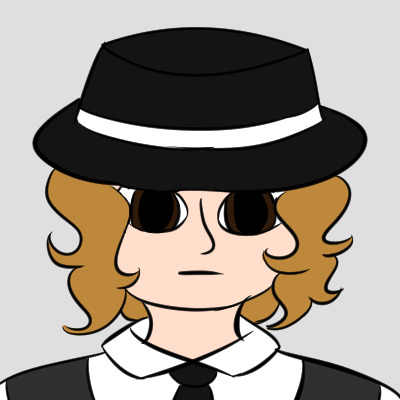
“...Also, I received your forum, um… Toyama? Matsuba?”
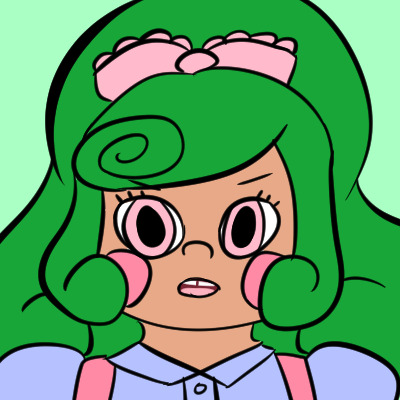
“Matsuba’s fine. I’ll need to keep up this facade for a while anyway.”

“Facade?”

“You can’t exactly be an undercover officer without criminals and their associates in your midst… and I’ll just leave it at that.” What did she mean by that? Was there a criminal in the building with us who wasn’t being truthful about who they were?
...Did they have something to do with our kidnapping?
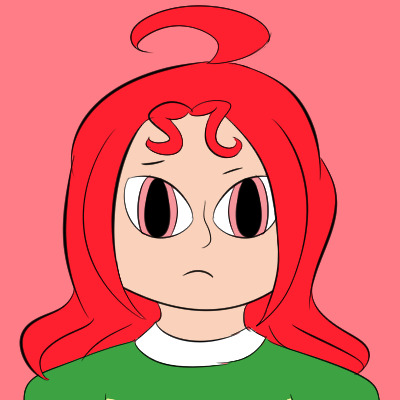
“...Right then. I’m no criminal expert, but if that criminal is really here and out for you, then staying hidden is probably a smart choice.”

“Yeah… but the thought of having a criminal after you is horrible to think about…”
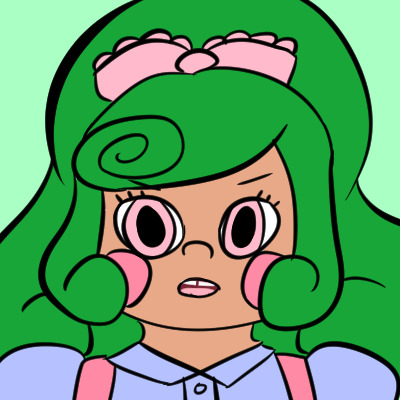
“It is, but it’s something I have to think about a lot. I don’t really get scared thinking about it that much, but I guess that’s because I’m used to it.”
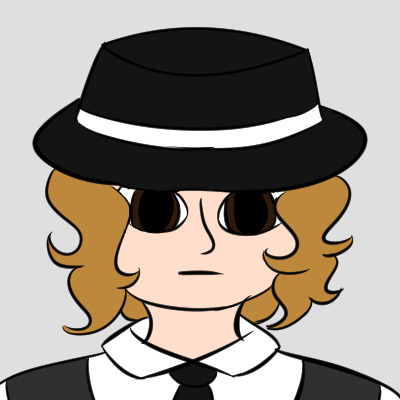
“I suppose that makes sense.”

“Well, I’m glad we all had this discussion. I suppose we should all just wander around until suppe-”

“Not so fast!”
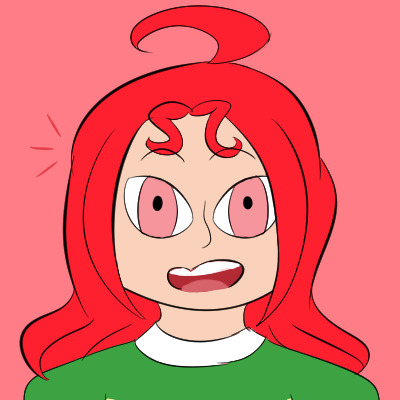
“Gah!”
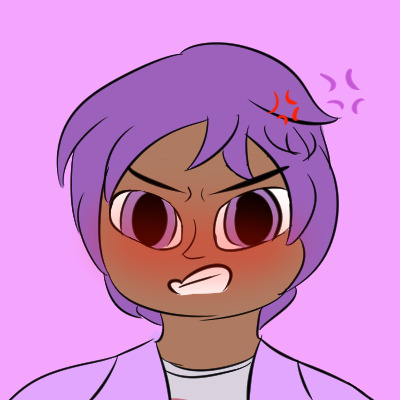
“You!”
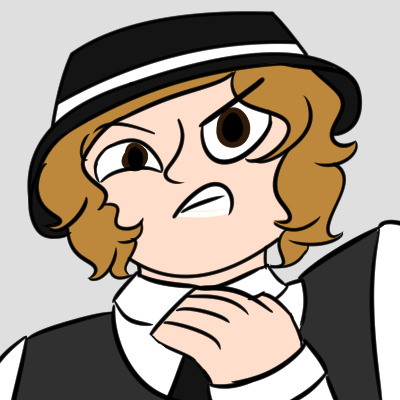
“...”

“Now what exactly is going on here? I give you those forums as a potential way to kill each other and here you are reading the contents like it’s some show and tell bullshit!”
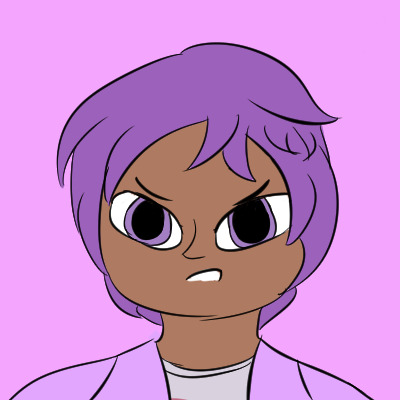
“So what? You can’t control what we do wit’em, and you can’t stop us from talkin’ bout’em either!”
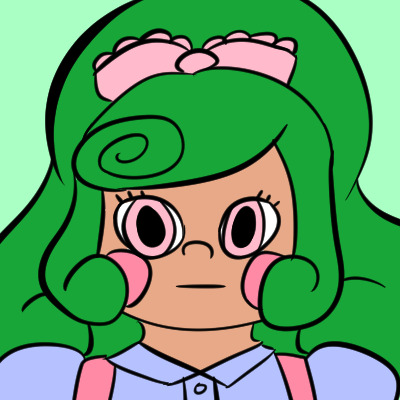
“Yeah, he’s right. It’s literally in the rules that you told us to follow.” She quickly booted up her Student Handbook.
“4. The host may not interfere with the students unless they break a rule or specifically request it.”
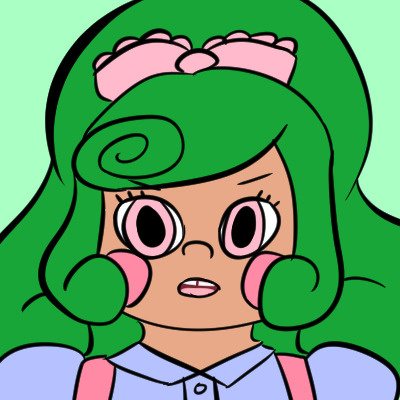
“You’d literally be breaking your own rules if you tried to force us to stop talking about it. Besides, you literally gave us a motive to kill someone. It’s only natural that it’d be a hot topic for discussion.” She was clearly trying to keep up her image as Midori, but it was almost like I could hear Chisato slipping through the cracks of her sentence.

“Well, I never! Seems like your law knowledge is coming in handy there, Officer!”
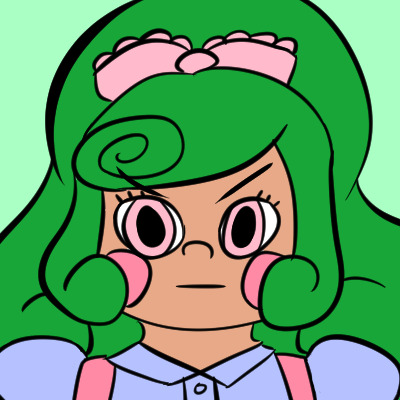
“...” I guess Monomage already knew who she was. She didn’t look scared though, so maybe Monomage wasn’t the criminal she mentioned.

“But, I guess since we’re all sharing stuff about each other…” He reached for the brim of his hat. “...I think it’s only fair that I share something about me!”
In that instant, he whipped the hat off his head, and…
...and…
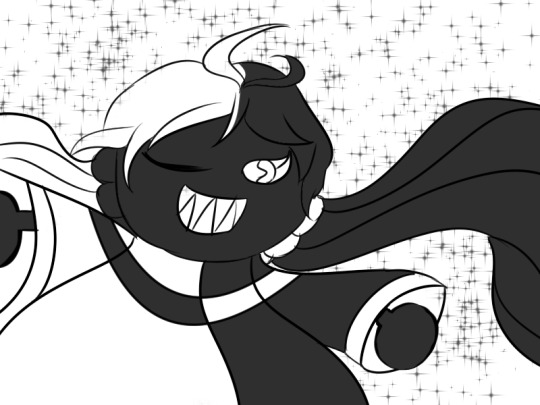
“Ta-da!”
...What the heck.
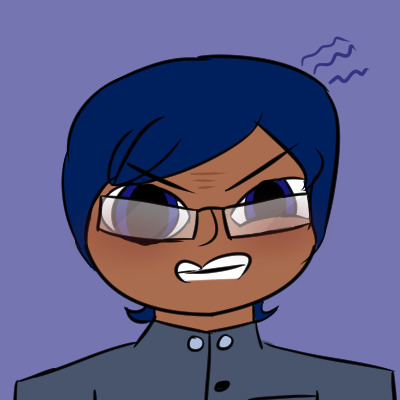
“What.”
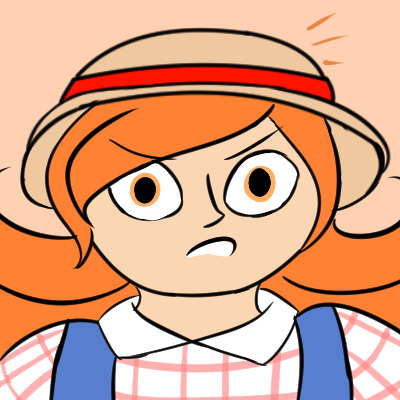
“You’re kiddin’ me.”
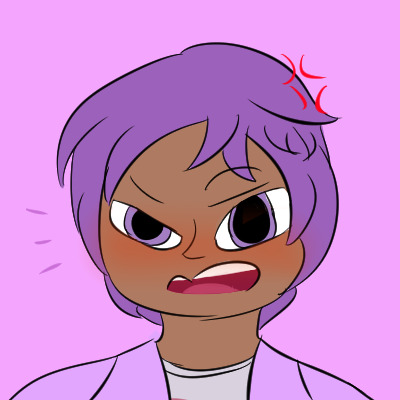
“What the fuck?!”

“Well, aren’t you just a pleasant bunch. Didn’t your parents ever teach you manners?”
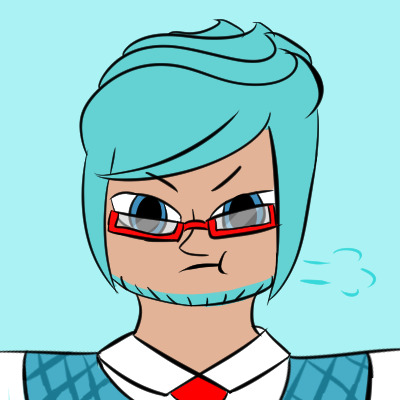
“W-We were taught to express gratitude to stuff we liked, not stuff like this. What the damn were you expecting reactionwise?”
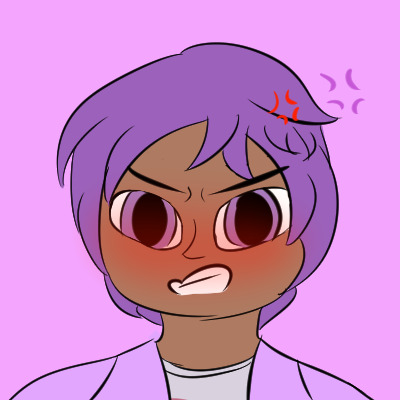
“Yeah! Tell’im like it is!”

“Oh, I get it! You all are just jealous that you don’t have luscious locks like mine! Shahahahaha!”
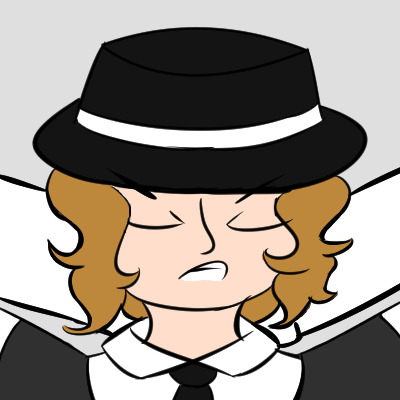
“Oh, you think you’re hot shit, huh?” Naomasa stood up from where he was sitting and reached behind his head.
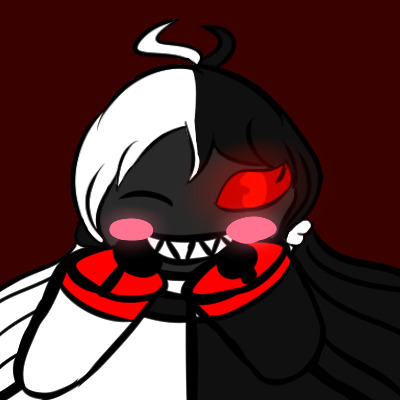
“Oh? A challenger approaches? A challenger who thinks his hair attracts more attention than mine? Shahaha! You can’t get higher quality than this, Mr. Saxobeat!” Monomage’s taunting didn’t seem to deter Naomasa in the slightest, because in mere seconds…

“You wanna bet?”

“...”

“!!!”

“Well, how bout that!”

“Seriously, you could probably be a shampoo model with hair like that!”
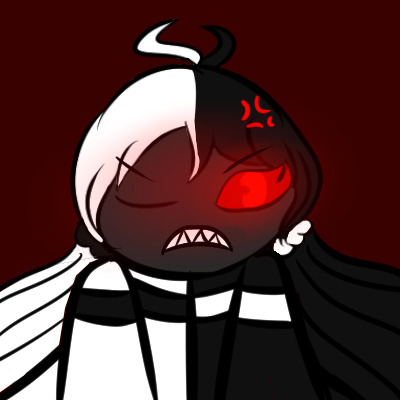
“Oh, come on! What happened to little ol’ me?”
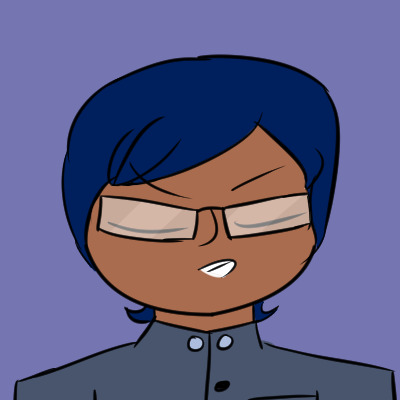
“You’re not important.”
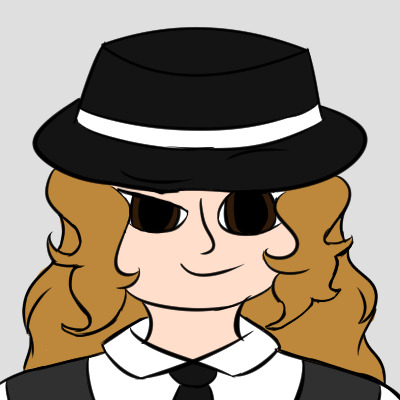
“You’ve also just lost a bet.”
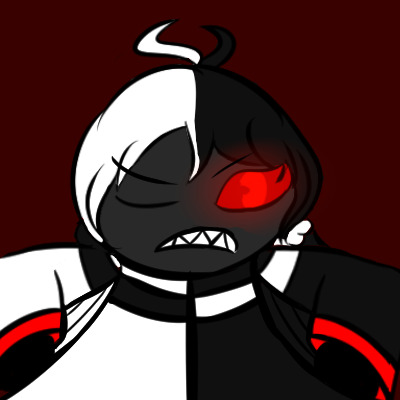
“Well, aren’t you just gentlemen! Guess I’ll leave you to your ‘teamwork’ bullcrap!” With a wave of his staff, his hat reappeared on his head and his hair was stuffed back inside.

“Thank you for choosing the Despairing Sunset Inn, and we hope you enjoy your miserable stay! Happy slaughtering!” He disappeared in yet another puff of smoke.

“Off he goes again.”
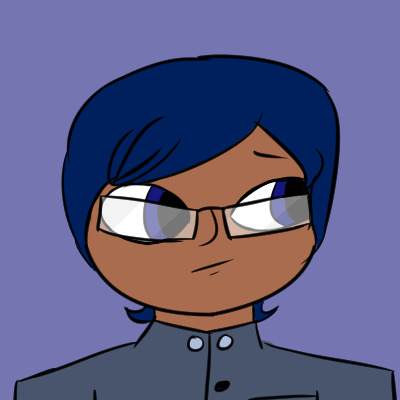
“Better gone than here, I suppose.”
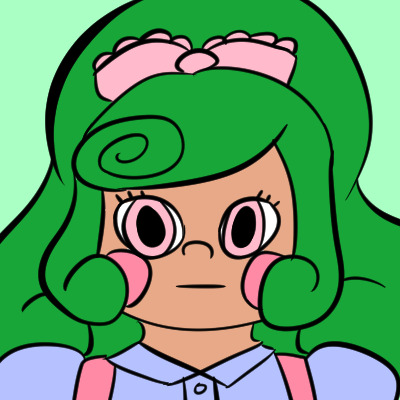
“What was that all about, anyway?”
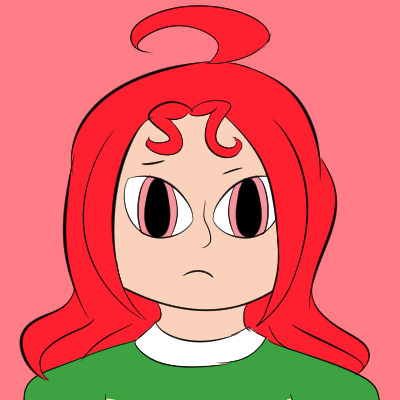
“I… couldn’t tell you, honestly.” I’d been confused the entire time Monomage had been in the room. First, he was condemning us for sharing our forums with each other, and then he was sharing… “information” about himself with all of us. Was he trying to confuse us, or did he have something else in mind?
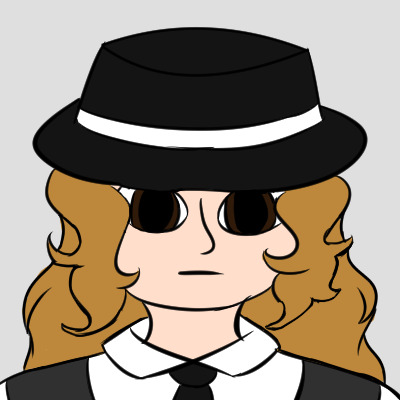
“Whatever it was, we managed to chase him off again.”

“You mean you chased him off with that hair of yours.”
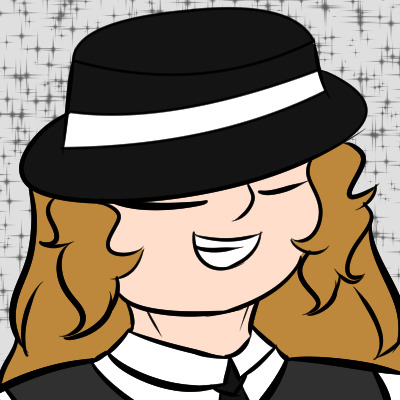
“Hehehe, just doing my best.”
I had to chuckle at that. After a bit of banter between Naomasa and Keiji, we all decided to head back. One or two people stayed behind, but the majority of us left for other places in the inn. I, however, wanted to check in with those people I hadn’t talked to earlier… That’d be Hitoshi, Nobuyuki, Kasumi, Asahi, and Naomi. I wondered what they thought of the whole thing?
BACK | NEXT
2 notes
·
View notes
Text
The Chickens of Mars/The Girl in the Moon: Chapter 1
Moon City was a gorgeous place at night. A lot of enigneering and money had gone into making it that way, and it showed. Hiding under every perfectly striking vista was excessive planning, design, and illusion. In a way, the whole city was a facade to project the image of timeless wealth and neon beauty of the most uncannily unnatural kind. The majority of the loveliness extended only to the downtown and some of the wealthier, more respectable areas. It was a massive city, the biggest in the whole human spread, and it was made so as to draw your attention to the parts it wanted you to see. Sometimes the staggering amount of craft that went into the deception still managed to cause Midori Salo to pause and shiver a little, and she’d seen it all nearly every day of her life. Despite its uninspiring name, was home to many of the most widely respected (and well paid) artists, designers and general rich “visionaries” and their visions had demanded jutting arrogant skyscrapers offset by many rounder, more soothing, complementary structures, and even those were super-massive undertakings, which lead to a city of sparkling bright light stacking on top of itself ever upwards that still managed to serve and reveal the infinite Earth-lit sky, and that was beautiful. It was also the last thing the Earth was really good for, and all Midori had ever seen of it.
She shrugged to readjust the too-many wine bottles she was trying to carry in her arms, bitterly deriding herself in her head for not bringing a bag or a cart or anything useful at all to the store. She arms were much stronger than they looked, but it was an awkward jumble she was having difficulty maintaining as she walked a little more than briskly, and she wasn’t about to slow down. She was already running late, and it was a big night for The Boss. More realistically he was her, and many many people’s master, but he preferred to go by just Boss. Not just to her, his little matchstick clone girl, but by basically everyone on The Moon. And his party needed more wine, even though he had more wine in storage than a bored army could drink in a year. He didn’t need more, her single armload wouldn’t make any difference, but she had been told to go get it, so she did. That’s what Midori was good for. Midori was a special girl.
Midori walked in a special way. She was afraid every second of her life. She held herself in a special way and inside she felt like...knew...that she didn’t belong to herself, so she didn’t really know how to stand. Her eyes were special because they were made in a lab, like she was, but had installed separately when she was 14 Old-Earth years old. They were beautiful eyes, better than real ones. The only memory she had of her old ones was them sitting on the surgical table next to her when she opened her new ones. She’d never seen any pictures of herself with them, so she was fairly certain she didn’t miss them. She was very fond of her current eyes. They were beautiful, though sometimes she was worried they said too much, which caused people to see what they wanted to in them. People frequently burdened her with what they thought they saw in her eyes and it made her uncomfortable. They were normally a bluish tinted slightly luminescent green, but when she was scared they would become less blue. When she was asleep they were dull gray, but nobody ever saw them like that
. The Boss has lots of clones on staff. That was common practice, but Midori wasn’t a regular worker clone, despite the tasks she was frequently given. She had a much higher purpose than that, and it kept her from having to deal with many of the occupational hazards that lead to a life expectancy among labor clones rivaled only by some of the Asteroid colonies for brevity. Clones were cheap, cheaper than robots for many applications. Most smaller machines, including the computer that acted as the gatekeeper to The Boss’s grounds, used bio-computers running off the augmented cloned brains of various animals, often chicken or dogs.
“Good evening...MIDORI SALO. Arrival time: 11:46 PM. Expected arrival time 11:30. DISCIPLINARY ACTIONS: not recommended.” The gate computer had always been kind to her. It rarely suggested any consequences for her frequent tardiness.
“Thank you,” she said in her pitch-modulated tones as she walked through the gap in the energy field separating her home from the less opulent world outside. It was meant to always sound pleasant and accommodating, but she’d had it long enough to know how to express how she really felt to anyone who paid attention enough to see. She knew a range of things: awkwardness, embarrassment, ashamed over nearly everything.
She was always sweet, if a little awkward, to robots and other machines. They had to be polite, it was in their programming, but they didn’t have to like anyone either, because nobody cared how their obedient machines felt. Most people couldn’t even recognize the limited range of emotions the AIs had because they didn’t know or care they were there. Midori knew better because she was the same as them. She was made up, like the city. Like the air on the Moon.
She thought about a lot of things but she didn’t usually speak very much except to seem pleasant or say things she had to say. Because of this she was well liked and was praised. She didn’t like it, but it didn’t seem to be in her nature to retreat. She always felt obligated to stay places she didn’t want to be, but that had to be fine. That was what she’d always known and she wasn’t the type to ever get what she wanted when she even knew what that was.
The Boss was rich enough to understand the value of flaunting a conspicuously nihilist aesthetic. The walkway to the dome was flanked only by one certain type of tree, one of the extremely few that could eke out subsistence in the dead lunar soil. They were each spaced just-so, perfectly distant from each other that anyone passing by them would be forced to wonder just how much some landscaper had been paid for being so ostentatiously tasteful. Apart from that there was only plain grayness surrounding the gently self-illuminated, perfectly straight path. The Dome was in the center of the perfectly round estate and was suitably massive. The surface was able to show any color or image the owner desired, and the Boss kept it pearly and white at all times.
The seamless door opened and she hurried inside. Her name flashed all around her on the walls in a stylized typographical ballet then turned to arrows as she scampered down the dimly lit hallway, directing her to the kitchen. “Silence enhancing” frequency tones played to accompany her every footstep and breath. The walls reacted with faintly pulsing dots of lights that seemed far away. The entire place was crafted to be a classy reactive experience, based on the trendy theory that if the environment is animated by the people in it, the people in it will be animated by the environment. Reciprocal Reactivity was the name of the concept. It was at least half malarkey, but it was very hip and very expensive so, of course, the Boss had it.
The kitchen exhibited no such frills. The Chef would have probably brained anyone who would try to put them in with a skillet. He had no time for such hoity-toity foppery. He demanded a clean, efficient kitchen with lots of equipment, lots of food and absolutely no gimmicks. Despite a quick temper, he was in no way a ‘mean’ man, and Midori had always liked him. He tried to look out for her in his way. He at least wanted the best for her. He was very serious and very passionate about his cooking, but he was sweet.
He was loud, though, “Salo, there you are! Jesus, put that wine down. Why didn’t you take a cart or even a bag? Fuck it, never mind. Listen, Goki has been looking for you. I think you’re supposed to be around for that whole...event thing.” He got less loud at the end and seemed careful about how he said it.
Goki was a new robot with an old brain, one that knew how to do everything The Boss wanted the exact way he liked it done, so he kept it around. It’s state of the art body, sleek and cutting-edge though it was, exhibited the same minimalism as the rest of the place, though there was an element of old-fashioned, functional ugliness to it. It was tall, red (An uncommon allowance of adornment, reserved only for Goki among the rest of the countless house robots), angular, covered in many useful appendages and with one big round blue eye-like sensor array on each side of its head.
“SALO! You are required in the BALLROOM for the CONTACT EXPERIMENT in 23 MINUTES.” Goki informed her in his static and authoritative way as soon as she found it, roaming the w\hallway with purposeful automated seriousness.”Take THIS. HRMMMMMN.” it buzz-hummed while it waited. While it made Midori wait. Eventually, a small white orb came zipping down the hallway and dropped a longish box into her arms. It contained a stylish, slightly modest and slightly distracting state of the art dress. It wasn’t the kind of thing she felt comfortable wearing, but it would probably look fine. She just wished it was up to her.
She took it to her room and changed. She checked herself in the screen in the wall and was pleasantly surprised at how much she liked it. It made her feel a small but more confident until she remembered what she was wearing it for. All of her ‘sisters’ would be there with her for the Contact Experiment. They would all share their horror, fear, and happiness that it wasn’t happening to them.
Moving lights all over the dress twitched all around over her as she made her way to the primary ballroom. They started as cute but the closer she got the more they became distracting, almost maddening. Every unpredictable blink caught her eye and even though she lived where it was always night and she was always surrounded by countless blinking lights in the sky and on every wall in the dome, the lights on her dress felt like a countdown.
As she got closer to the ballroom there were fewer robots and more Bozos, and they all stared as she passed. They all knew better than to try to touch her, though several had tried before. They were no longer around, but she could see in their twisted mutant grinning leers that many still wanted to.
The Bozos could usually do more or less whatever they wanted, and almost nobody would be able to do anything about it if they even cared enough to try. Like Midori, they were protected. They oversaw the whole of the remnants of human society. Part police part ghoulish morale officers. They were strikingly grotesque and exuded an engineered aura that caused the average person to pay little mind to them unless the Bozos wanted their attention, which was almost never good. Whatever trick: radiation, chemical or otherwise they used to maintain their shadowy non-presence didn’t affect her brain, so Midori found herself constantly cognizant of them. They didn’t bother her, but they were always looking at her, like the one who stood by the tall round door to the ballroom, permanent red smile arching over half up his tiny, blue spotted head, her yellow cruel eyes leering over his bulbous nose. He knew what waited for her inside, and seemed to be enjoying the feelings she was dreading.
The Primary ballroom was obviously huge and extravagantly simple in decor, apart from the hundreds of people standing around it, blandly garish in their finery, out to see themselves seen on such a momentous night, more important than the other parties. They were important people who she recognized, and her friends that she didn’t but knew who they were. Very few of them held any interest for her, she was meant to gather alongside her ‘Sisters’. The other clones like her. They were gathered on a gracefully curving balcony several stories up, with a good view of the Core- a massive glowing red orb of particle-wave matter, which sometimes seemed like dull Martian stone and at others seemed like an ethereal vision of red roundness. Alive yet stone.
Midori joined her ‘Sisters’ on the balcony, and no matter how she tried to mingle- make simple talk with the 2 dozen girls that looked identically special, just like her, her eyes kept being drawn upwards towards the Core. The only one of her sisters she didn’t see there was her favorite, Justine. The only one she felt like she was really friends with. It made her fear the worst. She didn’t know very many of the sisters, she hadn’t had many chances to meet them outside of infrequent gatherings, largely for study and medical purposes. A lot could go wrong in the life of even a regular clone, let alone very important, very experimental and very expensive models like her line, and considering their importance to the operation of the ZIPP-0 bio-computer, a lot of data had to be collected. She and her sisters weren’t the first generations of their line, but they were the first line where more than 10% had lived past puberty without dying from pituitary and pineal malformations, or being harvested for system components. Midori had never met any of the prior generations of her line, but she’d never heard anyone say they were all dead.
Bic was the only other one of herself that she really knew at all. They’d met 3 years back. They were at least good acquaintances, and she wasn’t talking to anyone so Midori went and stood by her. She had different eyes, purple and a little bigger than Midori’s and had her hair up, whereas Midori kept hers down.
“Have you seen Justine?”
Bic shook her head. Midori could see she was biting her lip. This was a hugely important night, for everyone alive in the remaining human spread, but maybe most of all for the Sisters. This night was the culmination of everything they had been created for. All the ones that were still alive were there. The only explanations for Justine’s absence were either she was already dead, or she’d been selected. Midori probably would have heard something if she were dead, which made her incredibly anxious.
“You live here?” Bic asked. Midori nodded. “How can something so big be so boring?”
Midori laughed a little before catching herself. She lowered her voice, which never got very loud in the first place, “The Boss thinks boring is classy. Interesting things make him feel less interesting.”
“That probably makes sense to him.”
“I promise it does. I hope that matters.” Midori said, smiling. She’d forgotten how fatalistic and funny Bic was. She was surprised she hadn’t been culled yet for her attitude. It wasn’t far off from Midori’s, but Bic always tended to be more vocal about it. The Sisters very rarely spoke up or tried to make their individual personalities known. It never worked out for anybody except the people who controlled them and made them.
“What’s it even like to live with that guy?” Bic asked, meaning The Boss.
Midori took a big breath and thought. She had to. Nobody ever asked her about that, and she had a lot to say but was cautious about the parts she was willing to let out, “I’ve heard a lot worse about others. He’s...not always bad. For the most part, he barely notices me. He likes to talk. He’s very excited about the fact that he exists.”
“They all are. Mine is. At least yours has done something with his life. Mine just wants to die comfortably with as much of his mommy’s money left as he could. I don’t get it. I wish I could leave him. I hate him, but... there are worse things than hating someone. I just wish he wasn’t so useless. It wouldn't make me stop hating him, but he’d have something to...justify it? I’m sorry. At least “The Boss”” Bic chuckled bleakly as she said his name, “Has built something. At least he did something with his dad’s money, right?”
She was right, but it didn’t make Midori feel any better about him. Bic’s “caretaker”
was Bilfer Attims, whose mother had been made a fortune off a settlement from her mother’s death in an asteroid mining accident and had built an empire purchasing and mining the same asteroids. Bilfr was notoriously stupid, even amongst the people forced by economic classes into being his peer.
Midori looked up at the core and the hastily assembled rig of supports and catwalks effortlessly kept in place by hover-spheres. Purple coated, green visor-ed scientists and sciencey-student types hovered about, adjusting the impressively clunky and ungraceful machines that looked so out of place in the Dome’s simple clean arrangement. The area directly above the Core was blocked off by blue velvet curtains, and Midori knew that meant a surprise. One she was already fairly certain of and dreading.
Midori nervously swallowed and asked, “Do you think they picked Justine for the experiment?”
“Of course they did. She’s from the University. She knows that shit more than anybody. It had to be her, we never had a chance. We’re just spare parts.” Bic had never been comforting. Midori admired that about her.
The lights gently lowered and the murmuring of the crowd died out. It was time for the Contact Experiment, but this was The Boss’ house, and he had dumped an incredible amount of money into the project, so he got to give a speech first. He extricated himself from the crush of sycophants he’d been speaking to and took his place, drink in hand, at the center of the room. He was older than he looked, through his many surgeries and genetic rejuvenation procedures had left him in the strange state that so many privileged older people Midori had seen, with an older face, older eyes made to look artificially younger, leaving them dangling in a perpetual unnatural look. He pulled it off better than most, partly because he had excellent taste in doctors, partly because, despite all the things Midori despised about him as essentially her jailer, he had more self-confidence and a sense of personal flair than most of the soulless hangers-on and pleasers around him. Even a semblance of personality was enough to set him apart in the circles he moved in. Midori didn’t think he was even that interesting but compared to the aggressively fawning rich people who wanted a better rich person to latch onto he was a tall glass of water. His hair was as perfect as his suit was not, garish, burgundy paisley that absolutely defied the sense of tasteful understatement that defined the things he surrounded himself with.
He was smiling, and let his smile hang over the assembly for a while, taking in the moment and forcing it back on everyone else before starting his speech, “Tonight, friends, is a monumental night, and not just for us. For all humanity.” applause, “Now I don’t need to tell you that we’re standing on the edge of history. Our planet is dead, rendered nearly unlivable by an unknown event that came right out of the sky and wiped out most of our species, but you know what? We survived! Here we are, living on the Moon, something our ancestors saw every night but never dared to dream we could live on, in the biggest, most beautiful humanity has ever created. But we do. A lot of suffering and sacrifice was required, and there were a lot of people who said it couldn’t be done, who tried to stand in the way of development, advancement, progress, but where are they now? And where are we?”
Applause. The Boss gave a big smile and let them clap until, with a wave of his hand, they didn’t. He continued. “We’ve come a long way, but we can’t stop here! Our options are limitless, but only if we chase them to the ends of the universe! Of course, I’m talking about The Pig. “ there were a few chuckles in the audience. What a character they must have thought, using the vulgar slang word for The Hogsong, “we see it every day, of course. It hangs over us, always there, slowly becoming more complete. I happen to be old enough to remember when it was nothing but a bare skeletal sketch of what is now. Something you'd have to blink to see. Now, well you can see it through the roof even now.” Which was true. He'd probably even pulled a few strings to ensure it would be so close and so directly over his dome. “The largest most complex structure ever assembled by humans, last hope of an endangered species, a triumph of our ingenuity, you’ve heard it all before. Something that big and impressive, something made to contain a whole new society, needs a big impressive computer built to manage a world, to create an experience for the people in that world, and to manage the life functions of, eventually, up to 10 million people one day! Until it finds world's suitable for human habitation. Not just one, mind you. We used to have just one world. Look how that worked out. We need to spread out as far as humanly possible, and in doing so we will prove just how much is humanly possible!”
Massive applause for that. Midori looked over at Bic, who positively vibrated sardonic bemusement. It was inspirational. Midori kept faking a smile, but Bic made her feel like she at least didn’t have to put any effort into it. Less need to shave off another little sliver of her soul to animate the pretense of pleasantness.
“I am endlessly proud of what the brave researchers at Utopia University have done, as we all should be. The ZIPP-0 Bioplex solved the fundamental problems facing the creation of more than artificial intelligence, but something far above and beyond. Tonight…” He winked, “we get to find out if it works. I'd hope so. I've invested a lot of money into it.” They crowd laughed dutifully. “I’m told all the preparations are complete, it’s been a pleasure grandstanding at you for a while. But...before we go on let me speak sincerely for a moment. Tonight is the result of a lot of hard work by a lot of incredibly gifted, very well funded people. Their work is not only exemplary but extraordinary…”
While the Boss kept going on in self-aggrandizing platitudes, Bic turned to Midori and whispered, “We’re allowed to drink, right?” Midori nodded. “Do you mind?” Midori didn’t mind. She snuck down the stairs, trying to be as unassuming as possible, feeling nervous at being the only one who wasn’t paying attention. Then she realized that nobody cared. She slipped a bottle from one of the several catering stations. The robot didn't care. She slipped back up and handed it to Bic who took a drink. “Thanks.”
“I didn't realize how much I was going to want a drink until you mentioned it,” Midori said and took a sip, then a much larger one. The speech came to a close about 11 minutes later by her internal clock. The lights refocused onto the core and the catwalks surrounding it. The curtains vanished in a holographic glitter. Justine hung in the air with her hands across her chest. She wore a white plastic suit, probably Imploplex-7, with massive cables streaming out the back and terminating in two plumes out her back to massive clunky computing vats that scientists on the catwalks carefully monitored. Midori recognized the one standing closest to the ledge as Dr. Doug Smith from Utopia University. He was head of the Core Component department, and if Midori thought she had a father she'd probably think it was him, but she didn't. She zoomed her artificial eyes in on Justine. Her face was blank in the way Justine’s always was when she was trying to ignore something. Midori had seen it plenty of times. Her lips were pursed tightly. She was breathing slowly and mindfully. She was as calm as she could force herself into being.
Dr. Smith’s voice came amplified for everyone to enjoy, “Core status: 96% inert. Submerge the control medium.” A steel orb came down above the core and extended a long arm with a black orb on the end. It sparkles and vanished, it's matter sucked like pixels in a vacuum into the orb not didn't look natural. It looked like a display glitch in reality. There was no sound. The Core began to pulsate a deep, organic looking Crimson in its center.
“Control medium inserted. Interface activated. Core is stable. 89% inert.” some faceless voice described.
“Decrease field locks. Subject status?” Smith said, watching very seriously.
“Psychological dampers are at full. No contamination. Vitals optimal..”
“She’s ready. Release psychological buffers and begin the descent.”
The anti-gravity suspension rings that circled Justine began to slowly lower her down towards the core. She remained placed, but Midori could see her chest tighten in fear. She looked over to Bic, who was biting her lip, also fixed on Justine, as were the rest of the Sisters.
When she was halfway down to the Core, Dr. Smith waved his hands, slowing the descent, “Status?”
“Psychological contamination has begun. 13% at this point. Absolute borderline in 5 meters. She’ll be unsalvageable beyond that point.” another anonymous voice responded. A girl’s.
“Core status?”
“Nominal. Field restrictions at last level. Exo-Ego Field interfaces online. All meta-psychological systems ready for data flash.”
“Proceed 3.5 meters,” Smith said. The rings lowered her further until Justine’s bare toes were just over the core. Midori saw her struggling to keep her eyes closed, trying to contain whatever she was experiencing.
“Absolute borderline passed. Psychological contamination at 60%. Subject’s ego deterioration is 7% below optimal but within parameters.”
“Apply buffers at quarter power. Release Exo-Ego Field containment.” Smith directed. There was a loud snapping sound, and purple plumes that looked like solid electricity snaked up from the core and wove around Justine’s toes.
“Field released. It’s locked onto the subject.”
“Charge to control medium and initiate Exo-Ego submerge.”
“Engaged.”
The purple tendrils stopped writing and phased through her feet, becoming a purple orb of viscous energy between Justine and the core. Her face showed none of the plain defiant serenity it had before. Her eyes were still shut tightly but her mouth was monstrously wide. Whatever sounds she was making were not amplified for the audience, and even Midori’s enhanced hearing couldn’t discern it over the almost musical crackling squeal of the brightening core. More purple tendrils danced up around it and slowed, hovering around the orb.
“Subject has begun integration with the Core.” Subject. They never called her by name.
Justine clutched her chest tight enough to tear skin. She was screaming, words or shrieks Midori couldn’t tell. Large screens floating around the ballroom displayed various close-ups on the core, the scientists, readouts no one could understand, but none showed any sort of detail of Justine. That wasn’t what the audience was supposed to be looking at or caring about.
“Increase submersion speed by the second factor. She’s doing just fine.” Smith said. He and the girl’s voice were the only ones who even called her “she”. That didn’t make Midori feel any better about them.
The rings moved her down faster, but she never went past the orb. Instead, she seemed to be almost disintegrating, feeding the pulsing ball of energy. More snaking electrical tentacles came up and less phased through than they seemed to hungrily begin to absorb portions of her legs, but not biologically, almost like it was transmuting her into its digital self, but it still made the skin around the points of contact bubble up. More. Midori zoomed her eyes in. The resolution was much grainier, but it seemed like tiny arms, complete with fully fingered hands were growing out of the Imoplex suit, stretching longingly towards the places of her dissolution. Midori wanted to stop watching, so she took another drink instead. Not watching was not an option. Not yet. Horror had her too transfixed. Sadness had her paralyzed. She held the bottle out to Bic, who didn't even notice it there until Midori nudged her arm with it. She apologized and took a hefty swig. Midori could see it was getting hard for her to watch.
It was getting even harder for Justine. Midori looked back and saw she was down to her hips but still alive and still in agony, even more than before. It kept going until it was up to her neck, and then she opened her eyes. They had always been unique. They didn’t affect a natural look. They were dot-matrix LCD, with a slow refresh rate, a throwback stylistic choice in the style of an old Earth LCD display. There was something so unnaturally beautiful about them. Midori had always loved them. She saw them one last time, showing the truest and unnatural digital display of brokenness and hopelessness. Midori couldn’t bear to see them like that, but they didn’t last long. Soon she was completely absorbed into the orb along with the suit. The wires which had been streaming from the back snapped and swung aside like dead weight.
“Subject dissolution complete. Control medium reads 100% retention.”
Dr. Smith took a big breath. He wasn’t smiling yet. “Close the Exo-Ego Field.”
There was a snap like tinkling, windchime thunder and a flash. The glowing orb shattered into countless sparks and sunk into the core, which began to hum and change shades to a deep, multilayered mostly opaque crimson.”
“Field closed. Control medium dived into the core. Exo-Ego integration commencing. Complete. Exo-Ego integrated at 95%.”
Dr. Smith nodded. “Operation is a success. ZIPP-0 is online.”
They applauded so much, the sound filled the whole ballroom and made Midori want to vomit. She looked to Bic, who looked back. All the composure and bemusement was gone from her face, replaced by ghastly, horrified blankness. Neither had anything to say. Midori took her hand and lead her down the stairs to the catering kiosk closest to the furthest of the ballroom's six balconies. They each grabbed a bottle of Martian wine and escaped outside while the people began to mingle and discuss the historic moment they’d both seen.
3 notes
·
View notes
Text
I did my own meme again : ) You should do it too if you have some time, I’d love to read your answers~
WOULD YOU RATHER: INAZUMA EDITION - PART 2
1. Go to a dinosaur museum with Shinsuke OR go to a book club with Ichino
I wanna see Shinsuke get super excited about dinosaurs, it’s so cute! He can teach me all about his favorite kinds~
2. Let Shindou teach you how to play the piano OR let Kidou teach you how to cook
I am musically-challenged and cooking is a more useful life skill. Although I can already cook... But Kidou can make me better : D Although I prefer Shindou to goggle-boy...
3. Eat Tachimukai’s super super spicy curry OR eat curry that Kogure made for you (with an evil look in his eye as he passes it to you)
I’ll take my chances and pray it’s not spicy - I can’t do spicy food at all!
4. Make onigiri with all the managers for a team of your choice OR make chocolates with one manager to give to only one of the boys
I didn’t realize this was so difficult... Okay, I’ll make chocolates with Aoi-chan to give to Sakuma! ...Although the timeline is not right... I wanna make onigiri for all of GO Raimon too! Damn you, me! This was a tough one!
5. Bake a cake with Tenma, Shinsuke, Hikaru, Kyousuke, Masaki and Aoi OR Be a manager for Inazuma Japan
I noticed that everyone is being clever and saying they’ll be a manager AND bake a cake with the team. But I love the GO first year kids so much TENMA so much and I wanna see Kyousuke and Masaki’s reaction when we bake a cake together...
6. Have Fei make you a matching plush bunny OR have Max make you a personalized hat
I don’t wear hats and omg I love plush toys... I only have two right now in my apartment, a Zangoose and my bunny. So my bunny needs a friend, Fei. Pink one please : D
7. Read soccer magazines with Tenma and Taiyou (Who will never get bored) OR listen to every single one of Midorikawa’s proverbs AND Osamu’s lectures
They both sound not super interesting to be honest but I’ll go with Tenma’s enthusiasm... Tho Mido will be enthusiastic too...
8. Go to a petting-zoo with Konoha OR play basketball with a very competitive Ibuki
I don’t know anything about her but I like petting animals. I’ll get her autograph to use it as bribery for Arata -w-
9. Have Tetsukado teach you boxing OR have Sakura teach you gymnastics
I imagine self-defence would be useful
10. Cuddle up under a blanket with Fei OR eat strawberry and cream cake with Tenma
I wanna cuddle with Fei!! How cute is he?? I bet he would be so cuddly~ Although it will get hot under there so quickly, and I don’t like being too hot. And cake is delicious aaa...
11. Have Manabe help you with your homework for the year OR visit a planet of your choice from Galaxy
IF I was still in school I’d pick Manabe. But I’m not so I pick visiting space.
12. Have Gouenji buy you a giant teddy bear OR have Sakuma buy you a penguin keychain
FFS I want both the giant teddy bear for my apartment and the keychain BUT I guess I could attach the penguin keychain to my keys. And I love Sakuma : D
13. Make high-quality chocolate with Shindou OR make traditional Japanese sweets with Kirino
As much as I love Ranmaru, if Shindou could teach me how to make chocolate I would be so happy! I also feel like Shindou would be a better cook than Kirino... ^^’ I can buy Japanese sweets, but I need Shindou to teach me the art of chocolate~
14. Be trapped in a snowstorm with Fubuki OR Endure a heatwave with Gouenji
I dislike both options but it is SO HOT right now that I can’t take any more heat...
15. Have Aoi teach you calligraphy OR take photos with Akane
Aoi-chan, teach me pretty calligraphy! I wanna write Kirino’s name!
16. Have Tsunami and Tenma show you around Okinawa OR have Fubuki and Yukimura show you around Hokkaido
I LOVE Hokkaido! Even though I love Tenma, Okinawa sounds so hot... ^^’ I do love Yukimura. And I have such precious memories from Hokkaido. I can visit my host family! And I would love to see Sapporo : D
17. Kariya bullies and teases you OR Kogure constantly plays pranks on you
Bring it on, smol fox -w-
18. Go to the Pokemon Center with Shinsuke OR go to the Ghibli museum with Hikaru
Pokemon every time
19. Go see a comedy show with Kabeyama, Kageno, Kurimatsu and the little ninja dude OR go bowling with Sangoku, Minamisawa, Kurumada and Amagi
I really dislike bowling, though those guys would make it fun. But I wanna laugh!
20. Watch old-fashioned samurai dramas with Midori OR watch old-fashioned detective shows with Minaho
To be honest I would be interested in both types of show BUT I like Midori more (we can talk about hot guys haha)
21. Plan a surprise birthday party for Kyousuke with Tenma OR plan a welcome home party for Yuuichi with Kyousuke
Oh wow, a party for Yuuichi would be so touching. I hope it happens. But I love the idea of planning a party with Tenma for Kyousuke. Extra bright and colourful decorations!
23. Go to a host club and have Minamisawa be your host OR go to a maid cafe and have one of the managers be your maid
As much as I wanna see Aoi-chan in a maid costume, I can’t turn down the chance for Minamisawa-senpai to be my host for an evening~
24. Go shopping with Kirino to pick out a birthday gift for Shindou OR Have Kazemaru and Midorikawa go shopping to pick out a birthday gift for you
Of course I would choose the first one, haha. I would love to go shopping with Kirino for his best friend~
25. Let Fudou cut your hair OR let Burn and Gazel ‘mind’ your house for a week
FFFF- I feel like my hair will grow back even though it will look awful at first but if anything gets damaged I have to pay for it... I don’t trust those two. OH WAIT! I’ll have to get a straight perm again and that’s really expensive... But I was going to get it done anyway in January... How long does it take for hair to grow back? My students won’t take me seriously. But I don’t trust those two with my house at all! What if they annoy the neighbours with their arguing? What if Burn sets the place on fire? I know I’m insured but I can’t risk it-
26. Eat the okonomiyaki from Rika’s shop OR eat the managers’ hand-crafted onigiri (not Natsumi’s!)
-I guess if Aphrodi comes with them it should be safe, right? I just got a new sofa, AND I cleaned the whole apartment today, I don’t want them to mess it up!
27. Visit Korea with Aphrodi, Burn and Gazel and get a personalized tour OR visit the Nara deer park with the Break Trio, Kazemaru and Fubuki
I already visited the deer park (but I wanna see Kaze’s reaction to deer!) and I wanna eat Korean food! Aphrodi will be a good tour guide : )
28. Hang out in America with Ichinose, Domon and the rest of team unicorn OR go on a European tour with the captains from FFI
I don’t know either teams at all but since I’m from Europe I wanna visit America. Wait no, Fideo! I pick Europe! Italy : D
29. Prepare for Raimon’s cultural festival with Kazemaru and Gouenji OR go on a camping trip with Tatsuya and Midorikawa
I wanna make yakisoba with them : )
30. Fall asleep on the train between Shindou and Kirino OR have both Kazemaru and Fubuki walk you home (you can invite them in for tea!)
I wanna fall asleep with them right now
#inazuma eleven#meme#would you rather#yeah i'd make aphrodi come too#i'm sure he'd calm them down#it's either#risk this apartment and my relationship with all my neighbours#or risk my hair and how i present myself at school#lose-lose#also paying for the straight perm#both options are expensive and ruin my image#why did i put this question in#i thought it would be funny if other people had to chose#not me
8 notes
·
View notes
Text
Top 10 Anime From Old School That You Must Watch In 2018 – OtakuKart
New Post has been published on https://hentaihun.com/blog/2018/01/11/top-10-anime-from-old-school-that-you-must-watch-in-2018-otakukart/
Top 10 Anime From Old School That You Must Watch In 2018 – OtakuKart
New and small anime come and go, but legendary old anime is always worth watching. There were way too many Old School awesome anime to watch, those anime totally beats any of new anime.How about re-watching all the epic anime from your childhood? or the one you that are still yet to be watched? So today I got you a list of Top 10 Anime From Old School That You Must Watch In 2018.
10.Trigun – 1998
Vash the Stampede is the most infamous outlaw on the planet Gunsmoke and with a 60 billion double dollar price on his head the most sought after!Trigun revolves around a man known as “Vash the Stampede” and two Bernardelli Insurance Society employees, Meryl Stryfe and Milly Thompson, who follow him around in order to minimize the damages inevitably caused by his appearance. Most of the damage attributed to Vash is actually caused by bounty hunters in pursuit of the sixty billion double dollar bounty on Vash’s head for the destruction of the city of July. However, he cannot remember the incident due to retrograde amnesia, being able to recall only fragments of the destroyed city and memories of his childhood. Throughout his travels, Vash tries to save lives using non-lethal force. He is occasionally joined by a priest, Nicholas D. Wolfwood, who, like Vash, is a superb gunfighter with a mysterious past.
9.Rurouni Kenshin – 1996
In the early Meiji era, after participating in the Bakumatsu war as the assassin “Hitokiri Battōsai”, Himura Kenshin wanders the countryside of Japan offering protection and aid to those in need as atonement for the murders he once committed.
8.Yu Yu Hakusho – 1992
Yu Yu Hakusho follows Yusuke Urameshi, a street-brawling delinquent who, in an uncharacteristic act of altruism, is hit by a car and killed in an attempt to save a young boy by pushing him out of the way. And so the epic story begins.
7.Berserk – 1997
Though the manga storyline remains largely intact, many changes were made, with the modification or elimination of characters, some of the series’ most violent and brutal scenes, and material that would have extended the story-line beyond the planned run of the anime series.
6.Outlaw Star – 1998
Outlaw Star is a space opera | Space Western set in the fictional “Towards Stars Era” universe.
5.Fist of The North Star – 1984
Fist of the North Star teaches you the art of manliness.Fist of the North Star is a Japanese manga series written by Buronson and illustrated by Tetsuo Hara. Serialized in Weekly Shōnen Jump from 1983 to 1988, the 245 chapters were initially collected in 27 tankobon volumes by Shueisha. Set in a post-apocalyptic world that has been destroyed by a nuclear war, the story centers on a warrior named Kenshiro, the successor of a deadly martial art style known as Hokuto Shinken, which gives him the ability to kill most adversaries from within through the use of the human body’s secret vital points, often resulting in an exceptionally violent and gory death.
4.Robotech – 1985
An alien spaceship crash lands on Earth and the technology and secrets she bears lead Earth into three destructive interplanetary wars.
3.Mobile Suit Gundam – 1980
In the war between the Earth Federation and Zeon, a young and inexperienced crew find themselves on a new spaceship. Their best hope of making it through the conflict is the Gundam, a giant humanoid robot, and its gifted teenage pilot.
2.Urusei Yatsura – 1981
The series begins when aliens from the planet Oniboshi invade Earth. They agree to leave only if Earth’s champion can defeat the Oni champion in a game of tag within a ten-day time limit.
1.Slam Dunk – 1993
About Sakuragi Hanamichi, a freshman of Shohoku High School who joining the basketball team because of the girl he has a crush on, Haruko.Although he is a newbie in this sport. He is no ordinary basketball player.Hanamichi Sakuragi is a delinquent and the leader of a gang. Sakuragi is very unpopular with girls, having been rejected an astonishing fifty times. In his first year at Shohoku High School, he meets Haruko Akagi, the girl of his dreams, and is overjoyed when she is not repulsed or scared of him like all the other girls he has asked out.Haruko, recognizing Sakuragi’s athleticism, introduces him to the Shohoku basketball team. Sakuragi is reluctant to join the team at first, as he has no prior experience in sports and thinks that basketball is a game for losers because his fiftieth rejection was in favor of a basketball player. Sakuragi, despite his extreme immaturity and fiery temper, proves to be a natural athlete and joins the team, mainly in the hopes of impressing and getting closer to Haruko. Later on, Sakuragi realizes that he has come to actually love the sport, despite having previously played primarily because of his crush on Haruko.
Which one is your favorite? Lemme hear you guys out in the comment section below or if you wanna get in touch with me you can connect with me on social media like Snapchat-Vibsz16 and Instagram.
13 New Adult Anime To Watch In 2018
List of the 13 New Adult Anime To Watch In 2018. It is often that we get such amazing request of anime.Without any further delay, let’s start our list.
**Numbers doesn’t show the rank of particular anime.**
10.Hatena Illusion-
Ever since watching a magic show held by him and his wife Maeve, Makoto Shiranui has always admired Mamoru Hoshisato—a world-class magician, as well as a friend of his parents—and came to Tokyo to become his apprentice. Kana, nicknamed Hatena, is the couple’s daughter and his childhood friend. As the hustle and bustle activities in Tokyo catches Makoto off guard such as burglaries by a beautiful thief, he depends on Hatena’s comforting side. When he came to Hoshisato’s now-haunted mansion to reunite with his childhood friend, he is greeted by the family’s butler and maid, Jeeves and Emma along with Hatena, only to discover that they are not as compatible anymore.
9.Boku No Kanojo Ga Majimesugiru Sho-Bitch na Ken
After Shinozaki Haruka confesses to the Class Rep, Kousaka Akiho, he comes to find that the perfect class representative might be a little bit harder to handle than he previously thought!
8.Imouto Sae Ireba Ii(A sister is all you need)
This is the story about the daily life of a young siscon novelist, Itsuki Hashima with his perfect little sister Chihiro, the genius illustrator Nayuta Kani, his best friend Miyako Shirakawa and some insane partners from his publishers.
7.Skirt no Naka wa Kedamono Deshita
Want some real “ADULT” you start watching it right now.It’s an anime which is more like Hen**a.Shizuka Kominami is a shy college student who, despite her bashful demeanor, attends a college mixer. There, she meets Ryou Kirishima, a beautiful, confident woman whom she quickly befriends. After leaving the mixer together, the two spend the night talking and drinking. But when an inebriated Shizuka ends up at Ryou’s apartment, one thing leads to another, and she finds herself being seduced by her new friend. And what’s more, Ryou is actually a crossdressing man!After a passion-filled night, Shizuka awakens to a note left by Ryou, promising more erotic moments between them later. How will Shizuka’s newfound relationship with Ryou unfold?
6. Shirobako-
The story follows a group of five best friends, Aoi Miyamori, Ema Yasuhara, Shizuka Sakaki, Misa Tōdō, and Midori Imai, who all go into the anime industry after their experiences in the animation club of their high school, with the dream of working on an actual anime together one day.
5. Osake wa Fuufu ni Natte Kara-
Chisato Mizusawa is a reserved but excellent and pretty assistant manager in her company. She has a secret that only her husband Sora knows, which is that she likes drinking alcohol, and she can become very cute when she is drunk! Even tonight, she gets relaxed (with the phrase “Shifuku~”) and drunk with the cocktail Sora makes♥. It’s a “Yoidere (Drunken Dere)” cocktail comedy of Japan’s closest husband and wife.
4.Saenai Heroine no Sodatekata Flat
Tomoya Aki, a male high school teenager who works part-time to fund his otaku lifestyle (anime, dating sims, and related merchandise) encounters a beautiful girl one day during spring vacation. A month later, he finds out that the girl is his classmate, Megumi, who is hardly noticeable to her classmates. Hoping to create a visual novel computer game, he turns to school beauties Eriri Spencer Sawamura for designing the art, and Utaha Kasumigaoka for writing the game scenario. Tomoya then recruits Megumi to star as the “heroine” (the main character’s love interest) of his game, thus forming the development team “Blessing Software”, in which the three most renowned students in the school (Tomoya, Eriri, and Utaha) work on one of the least noticeable (Megumi). The series follows their adventures in developing the game and their plans to sell it at the Comiket convention, as well as the emotional entanglements among the team.
3….
CONT READING…
0 notes
Text
How to Use Monochrome Color in Photography
Although photography is relativity new in terms of history, color still provides us with the opportunity to convey meaning and draw the eye. Monochromatic pallets take color photography to the next level.
From the origins of color photography, photographers have honed in on the emotional bond humans have with color. First used in prehistoric cave paintings, red ochre is one of the oldest pigments still in use. Blue was popular in Egypt and later in the medieval era to depict the delicate robes of deities. Fast forward to the present and we are surrounded by the same array of colors that impressed our ancestors. The difference now is only that we are able to harness it for our own uses with much greater ease.
What is monochrome color?
Black and white photography (which renders a photograph in varying degrees of gray) is the dominant example of monochromatic photography. You may be surprised to learn, however, that monochromatic photography is not limited to black and white.
A classic example is sepia, the warm tone that is reminiscent of aging photographs. Over time, sepia slowly claims the tones of black and white images and transforms them into shades of reddish-brown instead.
Basically, any photograph containing only the hues or tones of a specific color are considered monochromatic. A photograph can be organically similar in tone or edited in post-production by adjusting the blending mode of a solid colored layer. Either way, monochromatic photography is about prioritizing color to enhance mood and atmosphere.
Red
The color red traditionally conveys vigor, love, anger and valor – all of which are passionate emotions. The blood vessels in our face expand in times of stress making our cheeks flush red. We bleed red blood when we are hurt. When suffering from lack of sleep (or hay fever) we even develop bloodshot eyes. Red has a unique physical relationship with the human body. We are attracted to it because we are so familiar with it in ourselves.
Red also catches our eye so effectively because it triggers an evolutionary response. As humans evolved, we came to understand red as a color that could portend danger. The color which drew the watchful eye of our prehistoric relatives registers as an attention-grabbing color in the modern day. An example of this is red stop signs or signs warning of danger. Photographers can use this evolutionary connection to catch a viewer’s attention quickly and hold it for longer.
Monochromatic red conveys unease or unrest but also appears more gentle in nature with the change of seasons. It’s boldness contrasts pattern and texture, and blends with darker shades to lend the illusion of voyeurism or intimacy.
Orange
Sharing properties with yellow and red, orange is a versatile color most often associated with heat, health, and strength. It encourages extroversion and activity. Red, yellow and orange combine to depict flames and desert landscapes. Orange pumpkins carved out at Halloween lend their color to the annual festival. Red squirrels are actually orange, as is the red fox. The tiger, striped with orange lends its reputation of courage to the color itself.
A monochromatic orange color scheme could indicates sunset to a viewer.
In the color version of the “chicken or the egg” scenario, the color orange is believed to have been named after the fruit, not the other way around. In ancient Egypt, artists used orange mineral pigment for tomb paintings, and medieval artists used the pigment to color manuscripts. Before the late 15th century, Europeans had no specific name for orange, calling it yellow-red instead. Portuguese merchants, trading orange trees to Europe from Asia also imported the Sanskrit word “naranga” which evolved into “orange” in English.
Orange in photography is atmospheric and dense, but like red, it can also indicate danger or the need for caution. Because of its associations with sunsets and autumn, orange is useful for alluding to the time of day or the season. It can lend energy to a photograph, but its warm tones can also emphasize relaxation and warmth, reflecting the warmth of a fire or candle flame.
Orange can remind the viewer of the sweet fruit that shares the color’s namesake.
Yellow
Yellow is the color of joy, spontaneity, and laughter! As the color of the sun, yellow lends vibrancy to a photograph, creating lightness and a sense of ease. Alongside red, prehistoric cave paintings were decorated with yellow ochre and ancient Egyptians used yellow in elaborate tomb paintings to represent gold. The painter Vincent van Gohn was a great admirer of yellow, describing the color to his sister in a letter saying, “The sun, a light that for lack of a better word I can only call yellow, bright sulfur yellow, pale lemon gold. How beautiful yellow is!”
Our predominantly positive associations with the color yellow mean that photographers can convey scenes of happiness more effectively with color. Although darker yellows can be associated with autumn, lighter tones are associated with spring, renewal, and clarity.
Highly discernible from any background, yellow is useful for safety purposes. Bright yellow high-visibility jackets and reflectors are worn universally as a safety precaution. However, yellow’s vibrancy can prove to be fatiguing on the eyes, which could be the reason why jarring shades of yellow are sometimes associated with unease and anxiety. Try balancing yellow out with negative space or a range of soft yellow tones to avoid over-saturated photographs.
Green
In some cultures, green denotes jealousy and sickness. In others, it represents wealth or a lack of experience. Overall, however, most would agree that the dominant association of green is with nature. Green’s associations with health and growth stem from the life cycle of trees, seeds, fruit, and vegetables. Its ties to nature have even been borrowed by environmental groups who aim to preserve the natural environment.
Some scientists suggest that the calming and centering nature of the color green is due to the composition of the human eye. Our eyes have three types of receptors called cones, each dedicated to a particular wavelength – red, green or blue. Two of the three types of cones have a reasonably high degree of sensitivity to the green wavelength. When color information is relayed to the brain, the majority of that information is about green. This means that we are able to decipher variations in green tones much more effectively than we can for other colors which make the color more dynamic to a viewer.
Often green has been described as having a calming or even hypnotic effect due to its tonal variations. Monochromatic green color allows photographers to create densely rich imagery that appeals to our eyes and our emotions.
Blue
Blue is another color that has strong associations with nature. It is an incredibly changeable color, with perhaps the most diverse connotations. Overwhelmingly selected by many as a favorite color, blue speaks to many with the emotion even a picture cannot fully dictate. Interestingly, the distinction between blue and green as separate colors is not universal. For example, ancient Japanese people used the word “ao” as a blanket term for both green and blue. Modern Japanese has a separate word for green – midori – but the boundaries between the two colors is not as cleat-cut as that of English speakers.
Blue can convey sorrow, depression, harmony, relaxation, or modernity. When fluorescent, it can lend a scene of other-worldly surrealism. It’s a color that is often tied to internal emotion. A monochromatic blue scheme can subtly allude to a subject’s state or emphasize detail.
With the invention of new synthetic pigments in the 18th and 19th centuries, impressionist arts began to observe the color that existed in shadow. It became the favorite color of impressionist painters to convey nature, mood, and atmosphere. Later Picasso, realizing the emotional effect of blue tones, began to paint only in blues and greens after the death of a friend.
Pink
Often associated with young love, spring time, sensitivity, and femininity, pink takes its title from a flower of the same name. Ancient poets of Rome described the color in their verse, and Renaissance artist Raphael depicted baby Jesus presenting a pink flower to his mother Mary.
The luxurious hue of the color pink has perhaps been most stunningly captured by the films of director Wes Anderson. The rich wedding-cake pallet of movies such as The Grand Budapest Hotel are heavy with the atmospheric luxury and manicured design. But Wes Anderson’s color pallet is also somewhat stifling. The constant presence of the color pink becomes claustrophobic for the characters who inhabit the hotel. It’s presence, depicting traditional ideas of femininity is beautiful and smotheringly repetitious.
Because of its strong associations of softness and joy, pink can be used ironically to contrast darker imagery teetering between dark surrealism and a sweet dream.
Purple
Because of its associations with lavender, many cultures have come to view purple as the color of health and relaxation. As an intermediate between blue and red, purple is a color that stimulates contemplation but doesn’t belie a greater sense of sorrow as blue.
As the process for obtaining the color purple was long and laborious. Only royalty, nobles, kings and priests of the Mediterranean and Eastern Europe wore a very rich strain of purple dubbed “Tyrian purple”. While purple was worn less frequently by Medieval and Renaissance kings and princes, it continued to be worn by professors of Europe’s new universities, hence the association with wisdom.
While purple is readily available nowadays, it can often be a contentious topic of discussion. In my days of retail, I learned from discerning customers that purple is a color you either love or hate. While I consider myself a fence sitter in the matter, I can understand the passion that the color purple stimulates, worn by the wisest and often the most mysterious individuals in history.
Conclusion
So how do you use monochrome color in your photography? Use this information to use color to add mood and feeling to your images. Please share your monochrome images in the comments below.
The post How to Use Monochrome Color in Photography by Megan Kennedy appeared first on Digital Photography School.
from Digital Photography School https://digital-photography-school.com/use-monochrome-color-photography/
0 notes
Text
How to Use Monochrome Color in Photography
Although photography is relativity new in terms of history, color still provides us with the opportunity to convey meaning and draw the eye. Monochromatic pallets take color photography to the next level.
From the origins of color photography, photographers have honed in on the emotional bond humans have with color. First used in prehistoric cave paintings, red ochre is one of the oldest pigments still in use. Blue was popular in Egypt and later in the medieval era to depict the delicate robes of deities. Fast forward to the present and we are surrounded by the same array of colors that impressed our ancestors. The difference now is only that we are able to harness it for our own uses with much greater ease.
What is monochrome color?
Black and white photography (which renders a photograph in varying degrees of gray) is the dominant example of monochromatic photography. You may be surprised to learn, however, that monochromatic photography is not limited to black and white.
A classic example is sepia, the warm tone that is reminiscent of aging photographs. Over time, sepia slowly claims the tones of black and white images and transforms them into shades of reddish-brown instead.
Basically, any photograph containing only the hues or tones of a specific color are considered monochromatic. A photograph can be organically similar in tone or edited in post-production by adjusting the blending mode of a solid colored layer. Either way, monochromatic photography is about prioritizing color to enhance mood and atmosphere.
Red
The color red traditionally conveys vigor, love, anger and valor – all of which are passionate emotions. The blood vessels in our face expand in times of stress making our cheeks flush red. We bleed red blood when we are hurt. When suffering from lack of sleep (or hay fever) we even develop bloodshot eyes. Red has a unique physical relationship with the human body. We are attracted to it because we are so familiar with it in ourselves.
Red also catches our eye so effectively because it triggers an evolutionary response. As humans evolved, we came to understand red as a color that could portend danger. The color which drew the watchful eye of our prehistoric relatives registers as an attention-grabbing color in the modern day. An example of this is red stop signs or signs warning of danger. Photographers can use this evolutionary connection to catch a viewer’s attention quickly and hold it for longer.
Monochromatic red conveys unease or unrest but also appears more gentle in nature with the change of seasons. It’s boldness contrasts pattern and texture, and blends with darker shades to lend the illusion of voyeurism or intimacy.
Orange
Sharing properties with yellow and red, orange is a versatile color most often associated with heat, health, and strength. It encourages extroversion and activity. Red, yellow and orange combine to depict flames and desert landscapes. Orange pumpkins carved out at Halloween lend their color to the annual festival. Red squirrels are actually orange, as is the red fox. The tiger, striped with orange lends its reputation of courage to the color itself.
A monochromatic orange color scheme could indicates sunset to a viewer.
In the color version of the “chicken or the egg” scenario, the color orange is believed to have been named after the fruit, not the other way around. In ancient Egypt, artists used orange mineral pigment for tomb paintings, and medieval artists used the pigment to color manuscripts. Before the late 15th century, Europeans had no specific name for orange, calling it yellow-red instead. Portuguese merchants, trading orange trees to Europe from Asia also imported the Sanskrit word “naranga” which evolved into “orange” in English.
Orange in photography is atmospheric and dense, but like red, it can also indicate danger or the need for caution. Because of its associations with sunsets and autumn, orange is useful for alluding to the time of day or the season. It can lend energy to a photograph, but its warm tones can also emphasize relaxation and warmth, reflecting the warmth of a fire or candle flame.
Orange can remind the viewer of the sweet fruit that shares the color’s namesake.
Yellow
Yellow is the color of joy, spontaneity, and laughter! As the color of the sun, yellow lends vibrancy to a photograph, creating lightness and a sense of ease. Alongside red, prehistoric cave paintings were decorated with yellow ochre and ancient Egyptians used yellow in elaborate tomb paintings to represent gold. The painter Vincent van Gohn was a great admirer of yellow, describing the color to his sister in a letter saying, “The sun, a light that for lack of a better word I can only call yellow, bright sulfur yellow, pale lemon gold. How beautiful yellow is!”
Our predominantly positive associations with the color yellow mean that photographers can convey scenes of happiness more effectively with color. Although darker yellows can be associated with autumn, lighter tones are associated with spring, renewal, and clarity.
Highly discernible from any background, yellow is useful for safety purposes. Bright yellow high-visibility jackets and reflectors are worn universally as a safety precaution. However, yellow’s vibrancy can prove to be fatiguing on the eyes, which could be the reason why jarring shades of yellow are sometimes associated with unease and anxiety. Try balancing yellow out with negative space or a range of soft yellow tones to avoid over-saturated photographs.
Green
In some cultures, green denotes jealousy and sickness. In others, it represents wealth or a lack of experience. Overall, however, most would agree that the dominant association of green is with nature. Green’s associations with health and growth stem from the life cycle of trees, seeds, fruit, and vegetables. Its ties to nature have even been borrowed by environmental groups who aim to preserve the natural environment.
Some scientists suggest that the calming and centering nature of the color green is due to the composition of the human eye. Our eyes have three types of receptors called cones, each dedicated to a particular wavelength – red, green or blue. Two of the three types of cones have a reasonably high degree of sensitivity to the green wavelength. When color information is relayed to the brain, the majority of that information is about green. This means that we are able to decipher variations in green tones much more effectively than we can for other colors which make the color more dynamic to a viewer.
Often green has been described as having a calming or even hypnotic effect due to its tonal variations. Monochromatic green color allows photographers to create densely rich imagery that appeals to our eyes and our emotions.
Blue
Blue is another color that has strong associations with nature. It is an incredibly changeable color, with perhaps the most diverse connotations. Overwhelmingly selected by many as a favorite color, blue speaks to many with the emotion even a picture cannot fully dictate. Interestingly, the distinction between blue and green as separate colors is not universal. For example, ancient Japanese people used the word “ao” as a blanket term for both green and blue. Modern Japanese has a separate word for green – midori – but the boundaries between the two colors is not as cleat-cut as that of English speakers.
Blue can convey sorrow, depression, harmony, relaxation, or modernity. When fluorescent, it can lend a scene of other-worldly surrealism. It’s a color that is often tied to internal emotion. A monochromatic blue scheme can subtly allude to a subject’s state or emphasize detail.
With the invention of new synthetic pigments in the 18th and 19th centuries, impressionist arts began to observe the color that existed in shadow. It became the favorite color of impressionist painters to convey nature, mood, and atmosphere. Later Picasso, realizing the emotional effect of blue tones, began to paint only in blues and greens after the death of a friend.
Pink
Often associated with young love, spring time, sensitivity, and femininity, pink takes its title from a flower of the same name. Ancient poets of Rome described the color in their verse, and Renaissance artist Raphael depicted baby Jesus presenting a pink flower to his mother Mary.
The luxurious hue of the color pink has perhaps been most stunningly captured by the films of director Wes Anderson. The rich wedding-cake pallet of movies such as The Grand Budapest Hotel are heavy with the atmospheric luxury and manicured design. But Wes Anderson’s color pallet is also somewhat stifling. The constant presence of the color pink becomes claustrophobic for the characters who inhabit the hotel. It’s presence, depicting traditional ideas of femininity is beautiful and smotheringly repetitious.
Because of its strong associations of softness and joy, pink can be used ironically to contrast darker imagery teetering between dark surrealism and a sweet dream.
from DIYS http://ift.tt/2pwggeG
0 notes
Text
How to Use Monochrome Color in Photography
Although photography is relativity new in terms of history, color still provides us with the opportunity to convey meaning and draw the eye. Monochromatic pallets take color photography to the next level.
From the origins of color photography, photographers have honed in on the emotional bond humans have with color. First used in prehistoric cave paintings, red ochre is one of the oldest pigments still in use. Blue was popular in Egypt and later in the medieval era to depict the delicate robes of deities. Fast forward to the present and we are surrounded by the same array of colors that impressed our ancestors. The difference now is only that we are able to harness it for our own uses with much greater ease.
What is monochrome color?
Black and white photography (which renders a photograph in varying degrees of gray) is the dominant example of monochromatic photography. You may be surprised to learn, however, that monochromatic photography is not limited to black and white.
A classic example is sepia, the warm tone that is reminiscent of aging photographs. Over time, sepia slowly claims the tones of black and white images and transforms them into shades of reddish-brown instead.
Basically, any photograph containing only the hues or tones of a specific color are considered monochromatic. A photograph can be organically similar in tone or edited in post-production by adjusting the blending mode of a solid colored layer. Either way, monochromatic photography is about prioritizing color to enhance mood and atmosphere.
Red
The color red traditionally conveys vigor, love, anger and valor – all of which are passionate emotions. The blood vessels in our face expand in times of stress making our cheeks flush red. We bleed red blood when we are hurt. When suffering from lack of sleep (or hay fever) we even develop bloodshot eyes. Red has a unique physical relationship with the human body. We are attracted to it because we are so familiar with it in ourselves.
Red also catches our eye so effectively because it triggers an evolutionary response. As humans evolved, we came to understand red as a color that could portend danger. The color which drew the watchful eye of our prehistoric relatives registers as an attention-grabbing color in the modern day. An example of this is red stop signs or signs warning of danger. Photographers can use this evolutionary connection to catch a viewer’s attention quickly and hold it for longer.
Monochromatic red conveys unease or unrest but also appears more gentle in nature with the change of seasons. It’s boldness contrasts pattern and texture, and blends with darker shades to lend the illusion of voyeurism or intimacy.
Orange
Sharing properties with yellow and red, orange is a versatile color most often associated with heat, health, and strength. It encourages extroversion and activity. Red, yellow and orange combine to depict flames and desert landscapes. Orange pumpkins carved out at Halloween lend their color to the annual festival. Red squirrels are actually orange, as is the red fox. The tiger, striped with orange lends its reputation of courage to the color itself.
A monochromatic orange color scheme could indicates sunset to a viewer.
In the color version of the “chicken or the egg” scenario, the color orange is believed to have been named after the fruit, not the other way around. In ancient Egypt, artists used orange mineral pigment for tomb paintings, and medieval artists used the pigment to color manuscripts. Before the late 15th century, Europeans had no specific name for orange, calling it yellow-red instead. Portuguese merchants, trading orange trees to Europe from Asia also imported the Sanskrit word “naranga” which evolved into “orange” in English.
Orange in photography is atmospheric and dense, but like red, it can also indicate danger or the need for caution. Because of its associations with sunsets and autumn, orange is useful for alluding to the time of day or the season. It can lend energy to a photograph, but its warm tones can also emphasize relaxation and warmth, reflecting the warmth of a fire or candle flame.
Orange can remind the viewer of the sweet fruit that shares the color’s namesake.
Yellow
Yellow is the color of joy, spontaneity, and laughter! As the color of the sun, yellow lends vibrancy to a photograph, creating lightness and a sense of ease. Alongside red, prehistoric cave paintings were decorated with yellow ochre and ancient Egyptians used yellow in elaborate tomb paintings to represent gold. The painter Vincent van Gohn was a great admirer of yellow, describing the color to his sister in a letter saying, “The sun, a light that for lack of a better word I can only call yellow, bright sulfur yellow, pale lemon gold. How beautiful yellow is!”
Our predominantly positive associations with the color yellow mean that photographers can convey scenes of happiness more effectively with color. Although darker yellows can be associated with autumn, lighter tones are associated with spring, renewal, and clarity.
Highly discernible from any background, yellow is useful for safety purposes. Bright yellow high-visibility jackets and reflectors are worn universally as a safety precaution. However, yellow’s vibrancy can prove to be fatiguing on the eyes, which could be the reason why jarring shades of yellow are sometimes associated with unease and anxiety. Try balancing yellow out with negative space or a range of soft yellow tones to avoid over-saturated photographs.
Green
In some cultures, green denotes jealousy and sickness. In others, it represents wealth or a lack of experience. Overall, however, most would agree that the dominant association of green is with nature. Green’s associations with health and growth stem from the life cycle of trees, seeds, fruit, and vegetables. Its ties to nature have even been borrowed by environmental groups who aim to preserve the natural environment.
Some scientists suggest that the calming and centering nature of the color green is due to the composition of the human eye. Our eyes have three types of receptors called cones, each dedicated to a particular wavelength – red, green or blue. Two of the three types of cones have a reasonably high degree of sensitivity to the green wavelength. When color information is relayed to the brain, the majority of that information is about green. This means that we are able to decipher variations in green tones much more effectively than we can for other colors which make the color more dynamic to a viewer.
Often green has been described as having a calming or even hypnotic effect due to its tonal variations. Monochromatic green color allows photographers to create densely rich imagery that appeals to our eyes and our emotions.
Blue
Blue is another color that has strong associations with nature. It is an incredibly changeable color, with perhaps the most diverse connotations. Overwhelmingly selected by many as a favorite color, blue speaks to many with the emotion even a picture cannot fully dictate. Interestingly, the distinction between blue and green as separate colors is not universal. For example, ancient Japanese people used the word “ao” as a blanket term for both green and blue. Modern Japanese has a separate word for green – midori – but the boundaries between the two colors is not as cleat-cut as that of English speakers.
Blue can convey sorrow, depression, harmony, relaxation, or modernity. When fluorescent, it can lend a scene of other-worldly surrealism. It’s a color that is often tied to internal emotion. A monochromatic blue scheme can subtly allude to a subject’s state or emphasize detail.
With the invention of new synthetic pigments in the 18th and 19th centuries, impressionist arts began to observe the color that existed in shadow. It became the favorite color of impressionist painters to convey nature, mood, and atmosphere. Later Picasso, realizing the emotional effect of blue tones, began to paint only in blues and greens after the death of a friend.
Pink
Often associated with young love, spring time, sensitivity, and femininity, pink takes its title from a flower of the same name. Ancient poets of Rome described the color in their verse, and Renaissance artist Raphael depicted baby Jesus presenting a pink flower to his mother Mary.
The luxurious hue of the color pink has perhaps been most stunningly captured by the films of director Wes Anderson. The rich wedding-cake pallet of movies such as The Grand Budapest Hotel are heavy with the atmospheric luxury and manicured design. But Wes Anderson’s color pallet is also somewhat stifling. The constant presence of the color pink becomes claustrophobic for the characters who inhabit the hotel. It’s presence, depicting traditional ideas of femininity is beautiful and smotheringly repetitious.
Because of its strong associations of softness and joy, pink can be used ironically to contrast darker imagery teetering between dark surrealism and a sweet dream.
from DIYS http://ift.tt/2pwggeG
0 notes
Text
How to Use Monochrome Color in Photography
Although photography is relativity new in terms of history, color still provides us with the opportunity to convey meaning and draw the eye. Monochromatic pallets take color photography to the next level.
From the origins of color photography, photographers have honed in on the emotional bond humans have with color. First used in prehistoric cave paintings, red ochre is one of the oldest pigments still in use. Blue was popular in Egypt and later in the medieval era to depict the delicate robes of deities. Fast forward to the present and we are surrounded by the same array of colors that impressed our ancestors. The difference now is only that we are able to harness it for our own uses with much greater ease.
What is monochrome color?
Black and white photography (which renders a photograph in varying degrees of gray) is the dominant example of monochromatic photography. You may be surprised to learn, however, that monochromatic photography is not limited to black and white.
A classic example is sepia, the warm tone that is reminiscent of aging photographs. Over time, sepia slowly claims the tones of black and white images and transforms them into shades of reddish-brown instead.
Basically, any photograph containing only the hues or tones of a specific color are considered monochromatic. A photograph can be organically similar in tone or edited in post-production by adjusting the blending mode of a solid colored layer. Either way, monochromatic photography is about prioritizing color to enhance mood and atmosphere.
Red
The color red traditionally conveys vigor, love, anger and valor – all of which are passionate emotions. The blood vessels in our face expand in times of stress making our cheeks flush red. We bleed red blood when we are hurt. When suffering from lack of sleep (or hay fever) we even develop bloodshot eyes. Red has a unique physical relationship with the human body. We are attracted to it because we are so familiar with it in ourselves.
Red also catches our eye so effectively because it triggers an evolutionary response. As humans evolved, we came to understand red as a color that could portend danger. The color which drew the watchful eye of our prehistoric relatives registers as an attention-grabbing color in the modern day. An example of this is red stop signs or signs warning of danger. Photographers can use this evolutionary connection to catch a viewer’s attention quickly and hold it for longer.
Monochromatic red conveys unease or unrest but also appears more gentle in nature with the change of seasons. It’s boldness contrasts pattern and texture, and blends with darker shades to lend the illusion of voyeurism or intimacy.
Orange
Sharing properties with yellow and red, orange is a versatile color most often associated with heat, health, and strength. It encourages extroversion and activity. Red, yellow and orange combine to depict flames and desert landscapes. Orange pumpkins carved out at Halloween lend their color to the annual festival. Red squirrels are actually orange, as is the red fox. The tiger, striped with orange lends its reputation of courage to the color itself.
A monochromatic orange color scheme could indicates sunset to a viewer.
In the color version of the “chicken or the egg” scenario, the color orange is believed to have been named after the fruit, not the other way around. In ancient Egypt, artists used orange mineral pigment for tomb paintings, and medieval artists used the pigment to color manuscripts. Before the late 15th century, Europeans had no specific name for orange, calling it yellow-red instead. Portuguese merchants, trading orange trees to Europe from Asia also imported the Sanskrit word “naranga” which evolved into “orange” in English.
Orange in photography is atmospheric and dense, but like red, it can also indicate danger or the need for caution. Because of its associations with sunsets and autumn, orange is useful for alluding to the time of day or the season. It can lend energy to a photograph, but its warm tones can also emphasize relaxation and warmth, reflecting the warmth of a fire or candle flame.
Orange can remind the viewer of the sweet fruit that shares the color’s namesake.
Yellow
Yellow is the color of joy, spontaneity, and laughter! As the color of the sun, yellow lends vibrancy to a photograph, creating lightness and a sense of ease. Alongside red, prehistoric cave paintings were decorated with yellow ochre and ancient Egyptians used yellow in elaborate tomb paintings to represent gold. The painter Vincent van Gohn was a great admirer of yellow, describing the color to his sister in a letter saying, “The sun, a light that for lack of a better word I can only call yellow, bright sulfur yellow, pale lemon gold. How beautiful yellow is!”
Our predominantly positive associations with the color yellow mean that photographers can convey scenes of happiness more effectively with color. Although darker yellows can be associated with autumn, lighter tones are associated with spring, renewal, and clarity.
Highly discernible from any background, yellow is useful for safety purposes. Bright yellow high-visibility jackets and reflectors are worn universally as a safety precaution. However, yellow’s vibrancy can prove to be fatiguing on the eyes, which could be the reason why jarring shades of yellow are sometimes associated with unease and anxiety. Try balancing yellow out with negative space or a range of soft yellow tones to avoid over-saturated photographs.
Green
In some cultures, green denotes jealousy and sickness. In others, it represents wealth or a lack of experience. Overall, however, most would agree that the dominant association of green is with nature. Green’s associations with health and growth stem from the life cycle of trees, seeds, fruit, and vegetables. Its ties to nature have even been borrowed by environmental groups who aim to preserve the natural environment.
Some scientists suggest that the calming and centering nature of the color green is due to the composition of the human eye. Our eyes have three types of receptors called cones, each dedicated to a particular wavelength – red, green or blue. Two of the three types of cones have a reasonably high degree of sensitivity to the green wavelength. When color information is relayed to the brain, the majority of that information is about green. This means that we are able to decipher variations in green tones much more effectively than we can for other colors which make the color more dynamic to a viewer.
Often green has been described as having a calming or even hypnotic effect due to its tonal variations. Monochromatic green color allows photographers to create densely rich imagery that appeals to our eyes and our emotions.
Blue
Blue is another color that has strong associations with nature. It is an incredibly changeable color, with perhaps the most diverse connotations. Overwhelmingly selected by many as a favorite color, blue speaks to many with the emotion even a picture cannot fully dictate. Interestingly, the distinction between blue and green as separate colors is not universal. For example, ancient Japanese people used the word “ao” as a blanket term for both green and blue. Modern Japanese has a separate word for green – midori – but the boundaries between the two colors is not as cleat-cut as that of English speakers.
Blue can convey sorrow, depression, harmony, relaxation, or modernity. When fluorescent, it can lend a scene of other-worldly surrealism. It’s a color that is often tied to internal emotion. A monochromatic blue scheme can subtly allude to a subject’s state or emphasize detail.
With the invention of new synthetic pigments in the 18th and 19th centuries, impressionist arts began to observe the color that existed in shadow. It became the favorite color of impressionist painters to convey nature, mood, and atmosphere. Later Picasso, realizing the emotional effect of blue tones, began to paint only in blues and greens after the death of a friend.
Pink
Often associated with young love, spring time, sensitivity, and femininity, pink takes its title from a flower of the same name. Ancient poets of Rome described the color in their verse, and Renaissance artist Raphael depicted baby Jesus presenting a pink flower to his mother Mary.
The luxurious hue of the color pink has perhaps been most stunningly captured by the films of director Wes Anderson. The rich wedding-cake pallet of movies such as The Grand Budapest Hotel are heavy with the atmospheric luxury and manicured design. But Wes Anderson’s color pallet is also somewhat stifling. The constant presence of the color pink becomes claustrophobic for the characters who inhabit the hotel. It’s presence, depicting traditional ideas of femininity is beautiful and smotheringly repetitious.
Because of its strong associations of softness and joy, pink can be used ironically to contrast darker imagery teetering between dark surrealism and a sweet dream.
from DIYS http://ift.tt/2pwggeG
0 notes
Text
How to Use Monochrome Color in Photography
Although photography is relativity new in terms of history, color still provides us with the opportunity to convey meaning and draw the eye. Monochromatic pallets take color photography to the next level.
From the origins of color photography, photographers have honed in on the emotional bond humans have with color. First used in prehistoric cave paintings, red ochre is one of the oldest pigments still in use. Blue was popular in Egypt and later in the medieval era to depict the delicate robes of deities. Fast forward to the present and we are surrounded by the same array of colors that impressed our ancestors. The difference now is only that we are able to harness it for our own uses with much greater ease.
What is monochrome color?
Black and white photography (which renders a photograph in varying degrees of gray) is the dominant example of monochromatic photography. You may be surprised to learn, however, that monochromatic photography is not limited to black and white.
A classic example is sepia, the warm tone that is reminiscent of aging photographs. Over time, sepia slowly claims the tones of black and white images and transforms them into shades of reddish-brown instead.
Basically, any photograph containing only the hues or tones of a specific color are considered monochromatic. A photograph can be organically similar in tone or edited in post-production by adjusting the blending mode of a solid colored layer. Either way, monochromatic photography is about prioritizing color to enhance mood and atmosphere.
Red
The color red traditionally conveys vigor, love, anger and valor – all of which are passionate emotions. The blood vessels in our face expand in times of stress making our cheeks flush red. We bleed red blood when we are hurt. When suffering from lack of sleep (or hay fever) we even develop bloodshot eyes. Red has a unique physical relationship with the human body. We are attracted to it because we are so familiar with it in ourselves.
Red also catches our eye so effectively because it triggers an evolutionary response. As humans evolved, we came to understand red as a color that could portend danger. The color which drew the watchful eye of our prehistoric relatives registers as an attention-grabbing color in the modern day. An example of this is red stop signs or signs warning of danger. Photographers can use this evolutionary connection to catch a viewer’s attention quickly and hold it for longer.
Monochromatic red conveys unease or unrest but also appears more gentle in nature with the change of seasons. It’s boldness contrasts pattern and texture, and blends with darker shades to lend the illusion of voyeurism or intimacy.
Orange
Sharing properties with yellow and red, orange is a versatile color most often associated with heat, health, and strength. It encourages extroversion and activity. Red, yellow and orange combine to depict flames and desert landscapes. Orange pumpkins carved out at Halloween lend their color to the annual festival. Red squirrels are actually orange, as is the red fox. The tiger, striped with orange lends its reputation of courage to the color itself.
A monochromatic orange color scheme could indicates sunset to a viewer.
In the color version of the “chicken or the egg” scenario, the color orange is believed to have been named after the fruit, not the other way around. In ancient Egypt, artists used orange mineral pigment for tomb paintings, and medieval artists used the pigment to color manuscripts. Before the late 15th century, Europeans had no specific name for orange, calling it yellow-red instead. Portuguese merchants, trading orange trees to Europe from Asia also imported the Sanskrit word “naranga” which evolved into “orange” in English.
Orange in photography is atmospheric and dense, but like red, it can also indicate danger or the need for caution. Because of its associations with sunsets and autumn, orange is useful for alluding to the time of day or the season. It can lend energy to a photograph, but its warm tones can also emphasize relaxation and warmth, reflecting the warmth of a fire or candle flame.
Orange can remind the viewer of the sweet fruit that shares the color’s namesake.
Yellow
Yellow is the color of joy, spontaneity, and laughter! As the color of the sun, yellow lends vibrancy to a photograph, creating lightness and a sense of ease. Alongside red, prehistoric cave paintings were decorated with yellow ochre and ancient Egyptians used yellow in elaborate tomb paintings to represent gold. The painter Vincent van Gohn was a great admirer of yellow, describing the color to his sister in a letter saying, “The sun, a light that for lack of a better word I can only call yellow, bright sulfur yellow, pale lemon gold. How beautiful yellow is!”
Our predominantly positive associations with the color yellow mean that photographers can convey scenes of happiness more effectively with color. Although darker yellows can be associated with autumn, lighter tones are associated with spring, renewal, and clarity.
Highly discernible from any background, yellow is useful for safety purposes. Bright yellow high-visibility jackets and reflectors are worn universally as a safety precaution. However, yellow’s vibrancy can prove to be fatiguing on the eyes, which could be the reason why jarring shades of yellow are sometimes associated with unease and anxiety. Try balancing yellow out with negative space or a range of soft yellow tones to avoid over-saturated photographs.
Green
In some cultures, green denotes jealousy and sickness. In others, it represents wealth or a lack of experience. Overall, however, most would agree that the dominant association of green is with nature. Green’s associations with health and growth stem from the life cycle of trees, seeds, fruit, and vegetables. Its ties to nature have even been borrowed by environmental groups who aim to preserve the natural environment.
Some scientists suggest that the calming and centering nature of the color green is due to the composition of the human eye. Our eyes have three types of receptors called cones, each dedicated to a particular wavelength – red, green or blue. Two of the three types of cones have a reasonably high degree of sensitivity to the green wavelength. When color information is relayed to the brain, the majority of that information is about green. This means that we are able to decipher variations in green tones much more effectively than we can for other colors which make the color more dynamic to a viewer.
Often green has been described as having a calming or even hypnotic effect due to its tonal variations. Monochromatic green color allows photographers to create densely rich imagery that appeals to our eyes and our emotions.
Blue
Blue is another color that has strong associations with nature. It is an incredibly changeable color, with perhaps the most diverse connotations. Overwhelmingly selected by many as a favorite color, blue speaks to many with the emotion even a picture cannot fully dictate. Interestingly, the distinction between blue and green as separate colors is not universal. For example, ancient Japanese people used the word “ao” as a blanket term for both green and blue. Modern Japanese has a separate word for green – midori – but the boundaries between the two colors is not as cleat-cut as that of English speakers.
Blue can convey sorrow, depression, harmony, relaxation, or modernity. When fluorescent, it can lend a scene of other-worldly surrealism. It’s a color that is often tied to internal emotion. A monochromatic blue scheme can subtly allude to a subject’s state or emphasize detail.
With the invention of new synthetic pigments in the 18th and 19th centuries, impressionist arts began to observe the color that existed in shadow. It became the favorite color of impressionist painters to convey nature, mood, and atmosphere. Later Picasso, realizing the emotional effect of blue tones, began to paint only in blues and greens after the death of a friend.
Pink
Often associated with young love, spring time, sensitivity, and femininity, pink takes its title from a flower of the same name. Ancient poets of Rome described the color in their verse, and Renaissance artist Raphael depicted baby Jesus presenting a pink flower to his mother Mary.
The luxurious hue of the color pink has perhaps been most stunningly captured by the films of director Wes Anderson. The rich wedding-cake pallet of movies such as The Grand Budapest Hotel are heavy with the atmospheric luxury and manicured design. But Wes Anderson’s color pallet is also somewhat stifling. The constant presence of the color pink becomes claustrophobic for the characters who inhabit the hotel. It’s presence, depicting traditional ideas of femininity is beautiful and smotheringly repetitious.
Because of its strong associations of softness and joy, pink can be used ironically to contrast darker imagery teetering between dark surrealism and a sweet dream.
from DIYS http://ift.tt/2pwggeG
0 notes
Text
How to Use Monochrome Color in Photography
Although photography is relativity new in terms of history, color still provides us with the opportunity to convey meaning and draw the eye. Monochromatic pallets take color photography to the next level.
From the origins of color photography, photographers have honed in on the emotional bond humans have with color. First used in prehistoric cave paintings, red ochre is one of the oldest pigments still in use. Blue was popular in Egypt and later in the medieval era to depict the delicate robes of deities. Fast forward to the present and we are surrounded by the same array of colors that impressed our ancestors. The difference now is only that we are able to harness it for our own uses with much greater ease.
What is monochrome color?
Black and white photography (which renders a photograph in varying degrees of gray) is the dominant example of monochromatic photography. You may be surprised to learn, however, that monochromatic photography is not limited to black and white.
A classic example is sepia, the warm tone that is reminiscent of aging photographs. Over time, sepia slowly claims the tones of black and white images and transforms them into shades of reddish-brown instead.
Basically, any photograph containing only the hues or tones of a specific color are considered monochromatic. A photograph can be organically similar in tone or edited in post-production by adjusting the blending mode of a solid colored layer. Either way, monochromatic photography is about prioritizing color to enhance mood and atmosphere.
Red
The color red traditionally conveys vigor, love, anger and valor – all of which are passionate emotions. The blood vessels in our face expand in times of stress making our cheeks flush red. We bleed red blood when we are hurt. When suffering from lack of sleep (or hay fever) we even develop bloodshot eyes. Red has a unique physical relationship with the human body. We are attracted to it because we are so familiar with it in ourselves.
Red also catches our eye so effectively because it triggers an evolutionary response. As humans evolved, we came to understand red as a color that could portend danger. The color which drew the watchful eye of our prehistoric relatives registers as an attention-grabbing color in the modern day. An example of this is red stop signs or signs warning of danger. Photographers can use this evolutionary connection to catch a viewer’s attention quickly and hold it for longer.
Monochromatic red conveys unease or unrest but also appears more gentle in nature with the change of seasons. It’s boldness contrasts pattern and texture, and blends with darker shades to lend the illusion of voyeurism or intimacy.
Orange
Sharing properties with yellow and red, orange is a versatile color most often associated with heat, health, and strength. It encourages extroversion and activity. Red, yellow and orange combine to depict flames and desert landscapes. Orange pumpkins carved out at Halloween lend their color to the annual festival. Red squirrels are actually orange, as is the red fox. The tiger, striped with orange lends its reputation of courage to the color itself.
A monochromatic orange color scheme could indicates sunset to a viewer.
In the color version of the “chicken or the egg” scenario, the color orange is believed to have been named after the fruit, not the other way around. In ancient Egypt, artists used orange mineral pigment for tomb paintings, and medieval artists used the pigment to color manuscripts. Before the late 15th century, Europeans had no specific name for orange, calling it yellow-red instead. Portuguese merchants, trading orange trees to Europe from Asia also imported the Sanskrit word “naranga” which evolved into “orange” in English.
Orange in photography is atmospheric and dense, but like red, it can also indicate danger or the need for caution. Because of its associations with sunsets and autumn, orange is useful for alluding to the time of day or the season. It can lend energy to a photograph, but its warm tones can also emphasize relaxation and warmth, reflecting the warmth of a fire or candle flame.
Orange can remind the viewer of the sweet fruit that shares the color’s namesake.
Yellow
Yellow is the color of joy, spontaneity, and laughter! As the color of the sun, yellow lends vibrancy to a photograph, creating lightness and a sense of ease. Alongside red, prehistoric cave paintings were decorated with yellow ochre and ancient Egyptians used yellow in elaborate tomb paintings to represent gold. The painter Vincent van Gohn was a great admirer of yellow, describing the color to his sister in a letter saying, “The sun, a light that for lack of a better word I can only call yellow, bright sulfur yellow, pale lemon gold. How beautiful yellow is!”
Our predominantly positive associations with the color yellow mean that photographers can convey scenes of happiness more effectively with color. Although darker yellows can be associated with autumn, lighter tones are associated with spring, renewal, and clarity.
Highly discernible from any background, yellow is useful for safety purposes. Bright yellow high-visibility jackets and reflectors are worn universally as a safety precaution. However, yellow’s vibrancy can prove to be fatiguing on the eyes, which could be the reason why jarring shades of yellow are sometimes associated with unease and anxiety. Try balancing yellow out with negative space or a range of soft yellow tones to avoid over-saturated photographs.
Green
In some cultures, green denotes jealousy and sickness. In others, it represents wealth or a lack of experience. Overall, however, most would agree that the dominant association of green is with nature. Green’s associations with health and growth stem from the life cycle of trees, seeds, fruit, and vegetables. Its ties to nature have even been borrowed by environmental groups who aim to preserve the natural environment.
Some scientists suggest that the calming and centering nature of the color green is due to the composition of the human eye. Our eyes have three types of receptors called cones, each dedicated to a particular wavelength – red, green or blue. Two of the three types of cones have a reasonably high degree of sensitivity to the green wavelength. When color information is relayed to the brain, the majority of that information is about green. This means that we are able to decipher variations in green tones much more effectively than we can for other colors which make the color more dynamic to a viewer.
Often green has been described as having a calming or even hypnotic effect due to its tonal variations. Monochromatic green color allows photographers to create densely rich imagery that appeals to our eyes and our emotions.
Blue
Blue is another color that has strong associations with nature. It is an incredibly changeable color, with perhaps the most diverse connotations. Overwhelmingly selected by many as a favorite color, blue speaks to many with the emotion even a picture cannot fully dictate. Interestingly, the distinction between blue and green as separate colors is not universal. For example, ancient Japanese people used the word “ao” as a blanket term for both green and blue. Modern Japanese has a separate word for green – midori – but the boundaries between the two colors is not as cleat-cut as that of English speakers.
Blue can convey sorrow, depression, harmony, relaxation, or modernity. When fluorescent, it can lend a scene of other-worldly surrealism. It’s a color that is often tied to internal emotion. A monochromatic blue scheme can subtly allude to a subject’s state or emphasize detail.
With the invention of new synthetic pigments in the 18th and 19th centuries, impressionist arts began to observe the color that existed in shadow. It became the favorite color of impressionist painters to convey nature, mood, and atmosphere. Later Picasso, realizing the emotional effect of blue tones, began to paint only in blues and greens after the death of a friend.
Pink
Often associated with young love, spring time, sensitivity, and femininity, pink takes its title from a flower of the same name. Ancient poets of Rome described the color in their verse, and Renaissance artist Raphael depicted baby Jesus presenting a pink flower to his mother Mary.
The luxurious hue of the color pink has perhaps been most stunningly captured by the films of director Wes Anderson. The rich wedding-cake pallet of movies such as The Grand Budapest Hotel are heavy with the atmospheric luxury and manicured design. But Wes Anderson’s color pallet is also somewhat stifling. The constant presence of the color pink becomes claustrophobic for the characters who inhabit the hotel. It’s presence, depicting traditional ideas of femininity is beautiful and smotheringly repetitious.
Because of its strong associations of softness and joy, pink can be used ironically to contrast darker imagery teetering between dark surrealism and a sweet dream.
from DIYS http://ift.tt/2pwggeG
0 notes
Text
How to Use Monochrome Color in Photography
Although photography is relativity new in terms of history, color still provides us with the opportunity to convey meaning and draw the eye. Monochromatic pallets take color photography to the next level.
From the origins of color photography, photographers have honed in on the emotional bond humans have with color. First used in prehistoric cave paintings, red ochre is one of the oldest pigments still in use. Blue was popular in Egypt and later in the medieval era to depict the delicate robes of deities. Fast forward to the present and we are surrounded by the same array of colors that impressed our ancestors. The difference now is only that we are able to harness it for our own uses with much greater ease.
What is monochrome color?
Black and white photography (which renders a photograph in varying degrees of gray) is the dominant example of monochromatic photography. You may be surprised to learn, however, that monochromatic photography is not limited to black and white.
A classic example is sepia, the warm tone that is reminiscent of aging photographs. Over time, sepia slowly claims the tones of black and white images and transforms them into shades of reddish-brown instead.
Basically, any photograph containing only the hues or tones of a specific color are considered monochromatic. A photograph can be organically similar in tone or edited in post-production by adjusting the blending mode of a solid colored layer. Either way, monochromatic photography is about prioritizing color to enhance mood and atmosphere.
Red
The color red traditionally conveys vigor, love, anger and valor – all of which are passionate emotions. The blood vessels in our face expand in times of stress making our cheeks flush red. We bleed red blood when we are hurt. When suffering from lack of sleep (or hay fever) we even develop bloodshot eyes. Red has a unique physical relationship with the human body. We are attracted to it because we are so familiar with it in ourselves.
Red also catches our eye so effectively because it triggers an evolutionary response. As humans evolved, we came to understand red as a color that could portend danger. The color which drew the watchful eye of our prehistoric relatives registers as an attention-grabbing color in the modern day. An example of this is red stop signs or signs warning of danger. Photographers can use this evolutionary connection to catch a viewer’s attention quickly and hold it for longer.
Monochromatic red conveys unease or unrest but also appears more gentle in nature with the change of seasons. It’s boldness contrasts pattern and texture, and blends with darker shades to lend the illusion of voyeurism or intimacy.
Orange
Sharing properties with yellow and red, orange is a versatile color most often associated with heat, health, and strength. It encourages extroversion and activity. Red, yellow and orange combine to depict flames and desert landscapes. Orange pumpkins carved out at Halloween lend their color to the annual festival. Red squirrels are actually orange, as is the red fox. The tiger, striped with orange lends its reputation of courage to the color itself.
A monochromatic orange color scheme could indicates sunset to a viewer.
In the color version of the “chicken or the egg” scenario, the color orange is believed to have been named after the fruit, not the other way around. In ancient Egypt, artists used orange mineral pigment for tomb paintings, and medieval artists used the pigment to color manuscripts. Before the late 15th century, Europeans had no specific name for orange, calling it yellow-red instead. Portuguese merchants, trading orange trees to Europe from Asia also imported the Sanskrit word “naranga” which evolved into “orange” in English.
Orange in photography is atmospheric and dense, but like red, it can also indicate danger or the need for caution. Because of its associations with sunsets and autumn, orange is useful for alluding to the time of day or the season. It can lend energy to a photograph, but its warm tones can also emphasize relaxation and warmth, reflecting the warmth of a fire or candle flame.
Orange can remind the viewer of the sweet fruit that shares the color’s namesake.
Yellow
Yellow is the color of joy, spontaneity, and laughter! As the color of the sun, yellow lends vibrancy to a photograph, creating lightness and a sense of ease. Alongside red, prehistoric cave paintings were decorated with yellow ochre and ancient Egyptians used yellow in elaborate tomb paintings to represent gold. The painter Vincent van Gohn was a great admirer of yellow, describing the color to his sister in a letter saying, “The sun, a light that for lack of a better word I can only call yellow, bright sulfur yellow, pale lemon gold. How beautiful yellow is!”
Our predominantly positive associations with the color yellow mean that photographers can convey scenes of happiness more effectively with color. Although darker yellows can be associated with autumn, lighter tones are associated with spring, renewal, and clarity.
Highly discernible from any background, yellow is useful for safety purposes. Bright yellow high-visibility jackets and reflectors are worn universally as a safety precaution. However, yellow’s vibrancy can prove to be fatiguing on the eyes, which could be the reason why jarring shades of yellow are sometimes associated with unease and anxiety. Try balancing yellow out with negative space or a range of soft yellow tones to avoid over-saturated photographs.
Green
In some cultures, green denotes jealousy and sickness. In others, it represents wealth or a lack of experience. Overall, however, most would agree that the dominant association of green is with nature. Green’s associations with health and growth stem from the life cycle of trees, seeds, fruit, and vegetables. Its ties to nature have even been borrowed by environmental groups who aim to preserve the natural environment.
Some scientists suggest that the calming and centering nature of the color green is due to the composition of the human eye. Our eyes have three types of receptors called cones, each dedicated to a particular wavelength – red, green or blue. Two of the three types of cones have a reasonably high degree of sensitivity to the green wavelength. When color information is relayed to the brain, the majority of that information is about green. This means that we are able to decipher variations in green tones much more effectively than we can for other colors which make the color more dynamic to a viewer.
Often green has been described as having a calming or even hypnotic effect due to its tonal variations. Monochromatic green color allows photographers to create densely rich imagery that appeals to our eyes and our emotions.
Blue
Blue is another color that has strong associations with nature. It is an incredibly changeable color, with perhaps the most diverse connotations. Overwhelmingly selected by many as a favorite color, blue speaks to many with the emotion even a picture cannot fully dictate. Interestingly, the distinction between blue and green as separate colors is not universal. For example, ancient Japanese people used the word “ao” as a blanket term for both green and blue. Modern Japanese has a separate word for green – midori – but the boundaries between the two colors is not as cleat-cut as that of English speakers.
Blue can convey sorrow, depression, harmony, relaxation, or modernity. When fluorescent, it can lend a scene of other-worldly surrealism. It’s a color that is often tied to internal emotion. A monochromatic blue scheme can subtly allude to a subject’s state or emphasize detail.
With the invention of new synthetic pigments in the 18th and 19th centuries, impressionist arts began to observe the color that existed in shadow. It became the favorite color of impressionist painters to convey nature, mood, and atmosphere. Later Picasso, realizing the emotional effect of blue tones, began to paint only in blues and greens after the death of a friend.
Pink
Often associated with young love, spring time, sensitivity, and femininity, pink takes its title from a flower of the same name. Ancient poets of Rome described the color in their verse, and Renaissance artist Raphael depicted baby Jesus presenting a pink flower to his mother Mary.
The luxurious hue of the color pink has perhaps been most stunningly captured by the films of director Wes Anderson. The rich wedding-cake pallet of movies such as The Grand Budapest Hotel are heavy with the atmospheric luxury and manicured design. But Wes Anderson’s color pallet is also somewhat stifling. The constant presence of the color pink becomes claustrophobic for the characters who inhabit the hotel. It’s presence, depicting traditional ideas of femininity is beautiful and smotheringly repetitious.
Because of its strong associations of softness and joy, pink can be used ironically to contrast darker imagery teetering between dark surrealism and a sweet dream.
from DIYS http://ift.tt/2pwggeG
0 notes
Text
How to Use Monochrome Color in Photography
Although photography is relativity new in terms of history, color still provides us with the opportunity to convey meaning and draw the eye. Monochromatic pallets take color photography to the next level.
From the origins of color photography, photographers have honed in on the emotional bond humans have with color. First used in prehistoric cave paintings, red ochre is one of the oldest pigments still in use. Blue was popular in Egypt and later in the medieval era to depict the delicate robes of deities. Fast forward to the present and we are surrounded by the same array of colors that impressed our ancestors. The difference now is only that we are able to harness it for our own uses with much greater ease.
What is monochrome color?
Black and white photography (which renders a photograph in varying degrees of gray) is the dominant example of monochromatic photography. You may be surprised to learn, however, that monochromatic photography is not limited to black and white.
A classic example is sepia, the warm tone that is reminiscent of aging photographs. Over time, sepia slowly claims the tones of black and white images and transforms them into shades of reddish-brown instead.
Basically, any photograph containing only the hues or tones of a specific color are considered monochromatic. A photograph can be organically similar in tone or edited in post-production by adjusting the blending mode of a solid colored layer. Either way, monochromatic photography is about prioritizing color to enhance mood and atmosphere.
Red
The color red traditionally conveys vigor, love, anger and valor – all of which are passionate emotions. The blood vessels in our face expand in times of stress making our cheeks flush red. We bleed red blood when we are hurt. When suffering from lack of sleep (or hay fever) we even develop bloodshot eyes. Red has a unique physical relationship with the human body. We are attracted to it because we are so familiar with it in ourselves.
Red also catches our eye so effectively because it triggers an evolutionary response. As humans evolved, we came to understand red as a color that could portend danger. The color which drew the watchful eye of our prehistoric relatives registers as an attention-grabbing color in the modern day. An example of this is red stop signs or signs warning of danger. Photographers can use this evolutionary connection to catch a viewer’s attention quickly and hold it for longer.
Monochromatic red conveys unease or unrest but also appears more gentle in nature with the change of seasons. It’s boldness contrasts pattern and texture, and blends with darker shades to lend the illusion of voyeurism or intimacy.
Orange
Sharing properties with yellow and red, orange is a versatile color most often associated with heat, health, and strength. It encourages extroversion and activity. Red, yellow and orange combine to depict flames and desert landscapes. Orange pumpkins carved out at Halloween lend their color to the annual festival. Red squirrels are actually orange, as is the red fox. The tiger, striped with orange lends its reputation of courage to the color itself.
A monochromatic orange color scheme could indicates sunset to a viewer.
In the color version of the “chicken or the egg” scenario, the color orange is believed to have been named after the fruit, not the other way around. In ancient Egypt, artists used orange mineral pigment for tomb paintings, and medieval artists used the pigment to color manuscripts. Before the late 15th century, Europeans had no specific name for orange, calling it yellow-red instead. Portuguese merchants, trading orange trees to Europe from Asia also imported the Sanskrit word “naranga” which evolved into “orange” in English.
Orange in photography is atmospheric and dense, but like red, it can also indicate danger or the need for caution. Because of its associations with sunsets and autumn, orange is useful for alluding to the time of day or the season. It can lend energy to a photograph, but its warm tones can also emphasize relaxation and warmth, reflecting the warmth of a fire or candle flame.
Orange can remind the viewer of the sweet fruit that shares the color’s namesake.
Yellow
Yellow is the color of joy, spontaneity, and laughter! As the color of the sun, yellow lends vibrancy to a photograph, creating lightness and a sense of ease. Alongside red, prehistoric cave paintings were decorated with yellow ochre and ancient Egyptians used yellow in elaborate tomb paintings to represent gold. The painter Vincent van Gohn was a great admirer of yellow, describing the color to his sister in a letter saying, “The sun, a light that for lack of a better word I can only call yellow, bright sulfur yellow, pale lemon gold. How beautiful yellow is!”
Our predominantly positive associations with the color yellow mean that photographers can convey scenes of happiness more effectively with color. Although darker yellows can be associated with autumn, lighter tones are associated with spring, renewal, and clarity.
Highly discernible from any background, yellow is useful for safety purposes. Bright yellow high-visibility jackets and reflectors are worn universally as a safety precaution. However, yellow’s vibrancy can prove to be fatiguing on the eyes, which could be the reason why jarring shades of yellow are sometimes associated with unease and anxiety. Try balancing yellow out with negative space or a range of soft yellow tones to avoid over-saturated photographs.
Green
In some cultures, green denotes jealousy and sickness. In others, it represents wealth or a lack of experience. Overall, however, most would agree that the dominant association of green is with nature. Green’s associations with health and growth stem from the life cycle of trees, seeds, fruit, and vegetables. Its ties to nature have even been borrowed by environmental groups who aim to preserve the natural environment.
Some scientists suggest that the calming and centering nature of the color green is due to the composition of the human eye. Our eyes have three types of receptors called cones, each dedicated to a particular wavelength – red, green or blue. Two of the three types of cones have a reasonably high degree of sensitivity to the green wavelength. When color information is relayed to the brain, the majority of that information is about green. This means that we are able to decipher variations in green tones much more effectively than we can for other colors which make the color more dynamic to a viewer.
Often green has been described as having a calming or even hypnotic effect due to its tonal variations. Monochromatic green color allows photographers to create densely rich imagery that appeals to our eyes and our emotions.
Blue
Blue is another color that has strong associations with nature. It is an incredibly changeable color, with perhaps the most diverse connotations. Overwhelmingly selected by many as a favorite color, blue speaks to many with the emotion even a picture cannot fully dictate. Interestingly, the distinction between blue and green as separate colors is not universal. For example, ancient Japanese people used the word “ao” as a blanket term for both green and blue. Modern Japanese has a separate word for green – midori – but the boundaries between the two colors is not as cleat-cut as that of English speakers.
Blue can convey sorrow, depression, harmony, relaxation, or modernity. When fluorescent, it can lend a scene of other-worldly surrealism. It’s a color that is often tied to internal emotion. A monochromatic blue scheme can subtly allude to a subject’s state or emphasize detail.
With the invention of new synthetic pigments in the 18th and 19th centuries, impressionist arts began to observe the color that existed in shadow. It became the favorite color of impressionist painters to convey nature, mood, and atmosphere. Later Picasso, realizing the emotional effect of blue tones, began to paint only in blues and greens after the death of a friend.
Pink
Often associated with young love, spring time, sensitivity, and femininity, pink takes its title from a flower of the same name. Ancient poets of Rome described the color in their verse, and Renaissance artist Raphael depicted baby Jesus presenting a pink flower to his mother Mary.
The luxurious hue of the color pink has perhaps been most stunningly captured by the films of director Wes Anderson. The rich wedding-cake pallet of movies such as The Grand Budapest Hotel are heavy with the atmospheric luxury and manicured design. But Wes Anderson’s color pallet is also somewhat stifling. The constant presence of the color pink becomes claustrophobic for the characters who inhabit the hotel. It’s presence, depicting traditional ideas of femininity is beautiful and smotheringly repetitious.
Because of its strong associations of softness and joy, pink can be used ironically to contrast darker imagery teetering between dark surrealism and a sweet dream.
from DIYS http://ift.tt/2pwggeG
0 notes